We woke up to a beautiful and quiet morning in the Khorixas riverbed, with the rising sun colouring the gnarled trees a soft morning-orange!
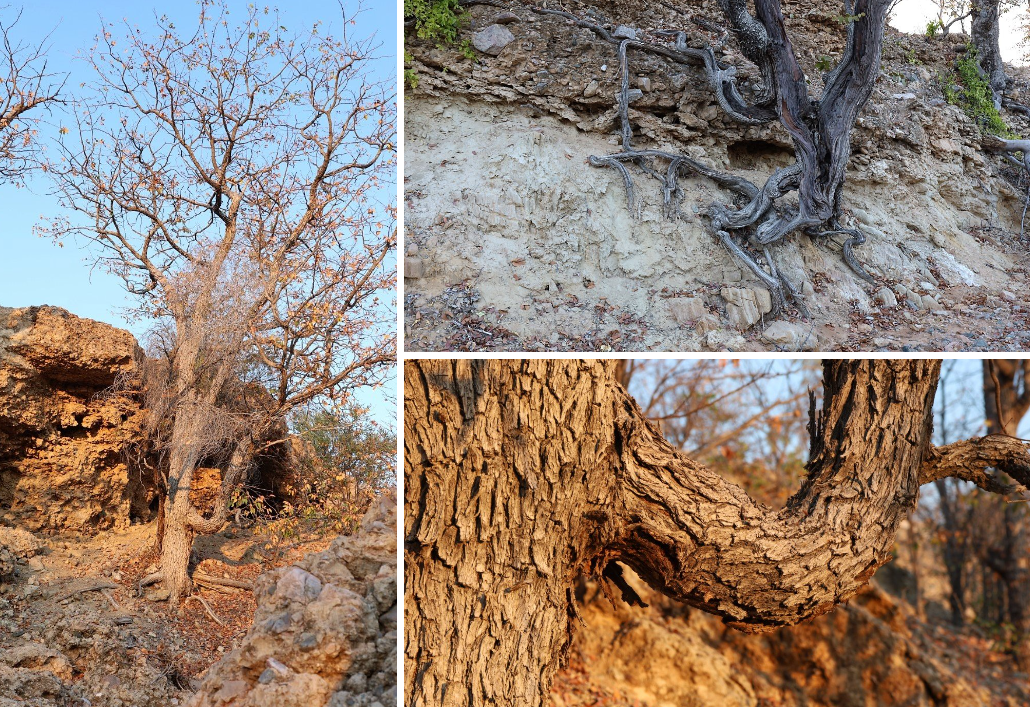
We all had some errands to do before undertaking the big trip north and we made arrangements with Gavin and Lee to meet up at Sesfontein.
Besides completely filling up with diesel (in main tank, spare tank and jerry cans), Stefaan wanted to change the 2 back tires. They had gotten a bit of a beating in the riverbed when we left the rhino-tracking-waterhole and he rather wanted the two brand spanking new spare wheels to take on the off-roads of Kaoko Land. In a way it was a wise idea: we could see and learn how a professional garage guy would do it.
Ok! … that eventually proved an exercise and a half and out of the deepest of my heart… I hope we’ll never ever get a flat tire when it is only the two of us! Some 6 or 8 guys put in all their blood and sweat to jack our baby up, loosen the nuts of the wheels and replace the tires. I think it took about an hour to change the two back tires… with 8 people.
Eventually we were sorted and left Khorixas towards Palmwag. The road was solitair, rocky and dusty cutting through white and red desert sands, with the occasional few wild giraffes and elephants roaming the plains. The road stretched into eternity with the blue silhouette of the mountain ranges a shade darker against the azure sky.
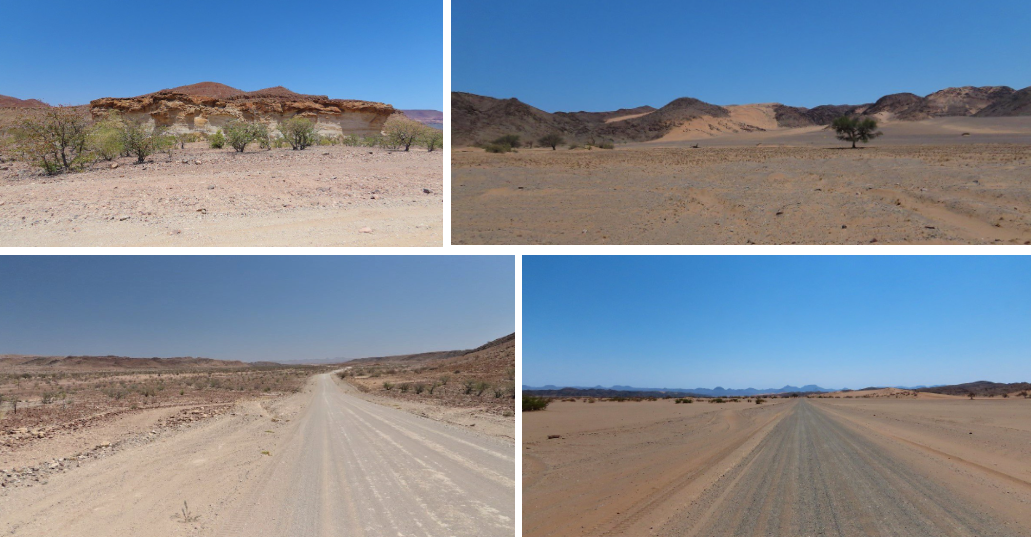
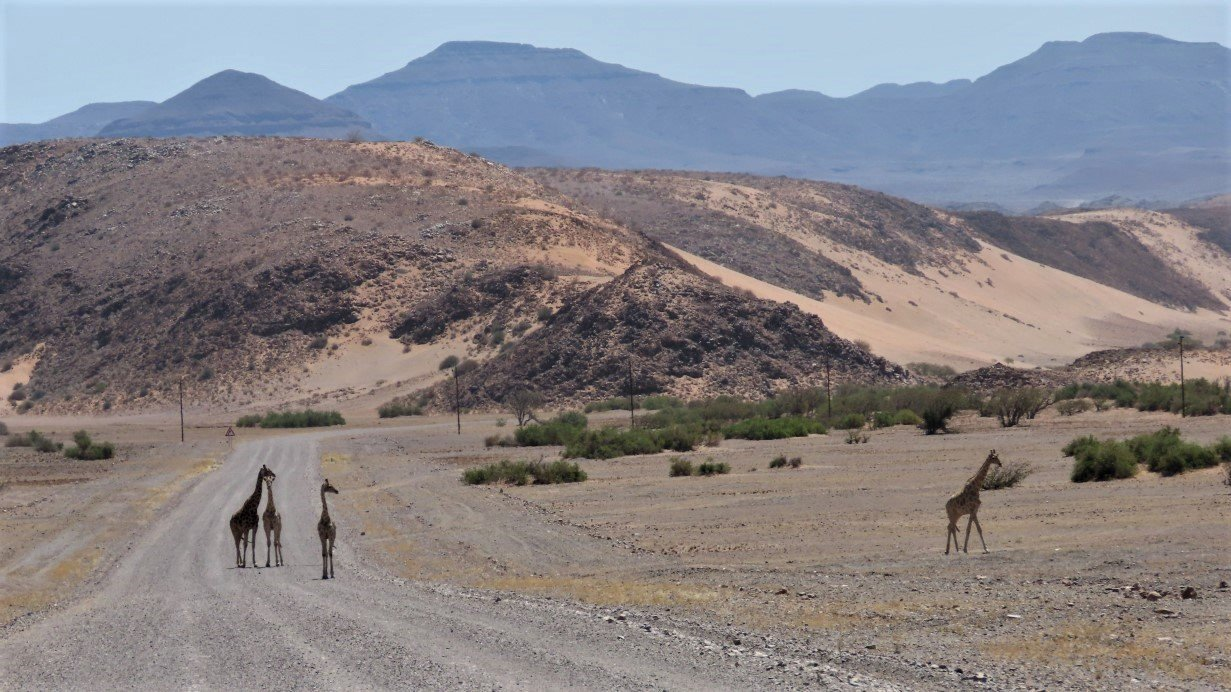
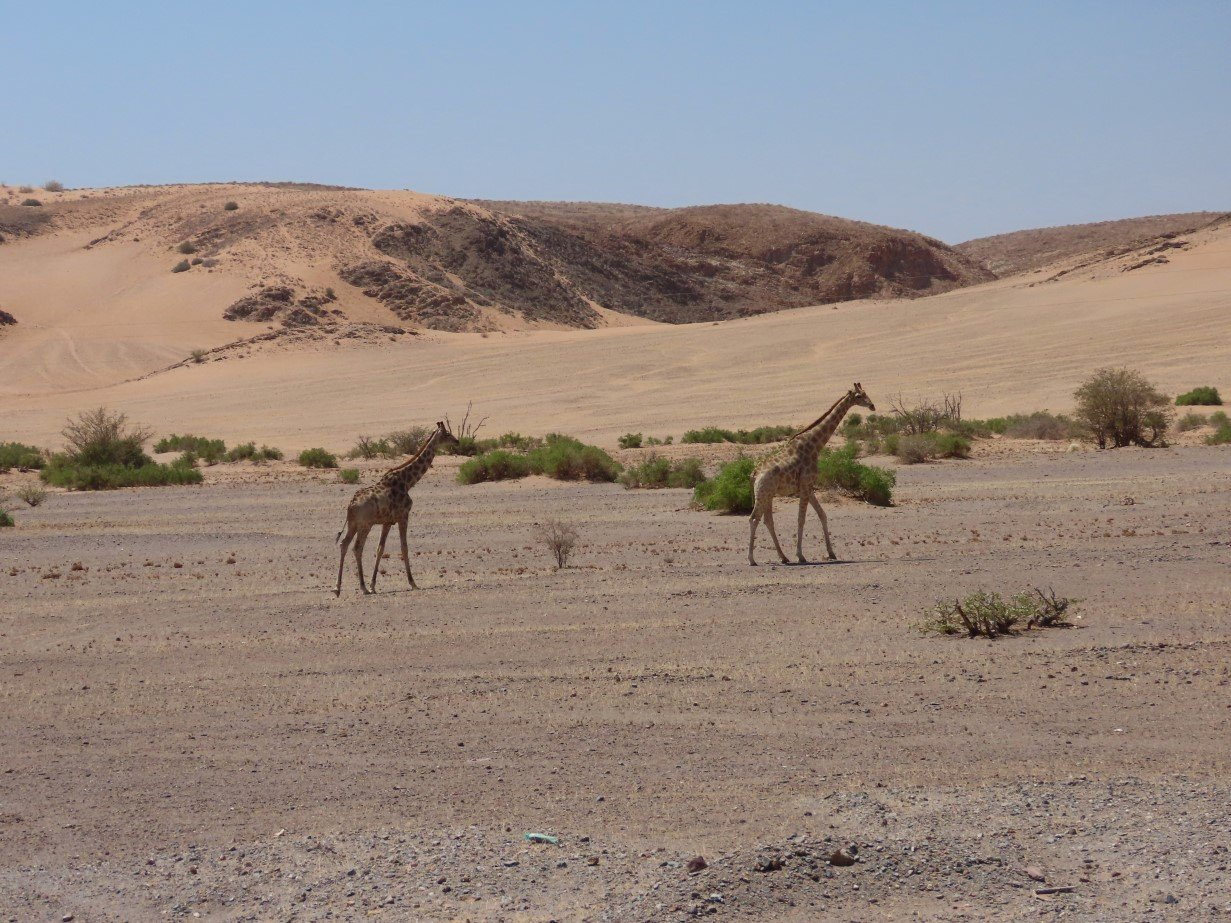
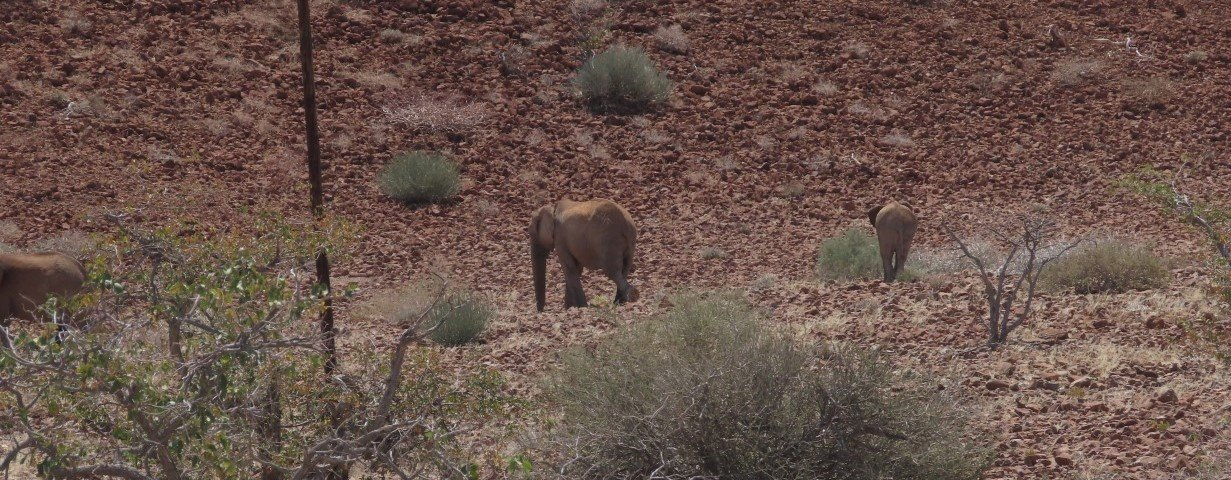
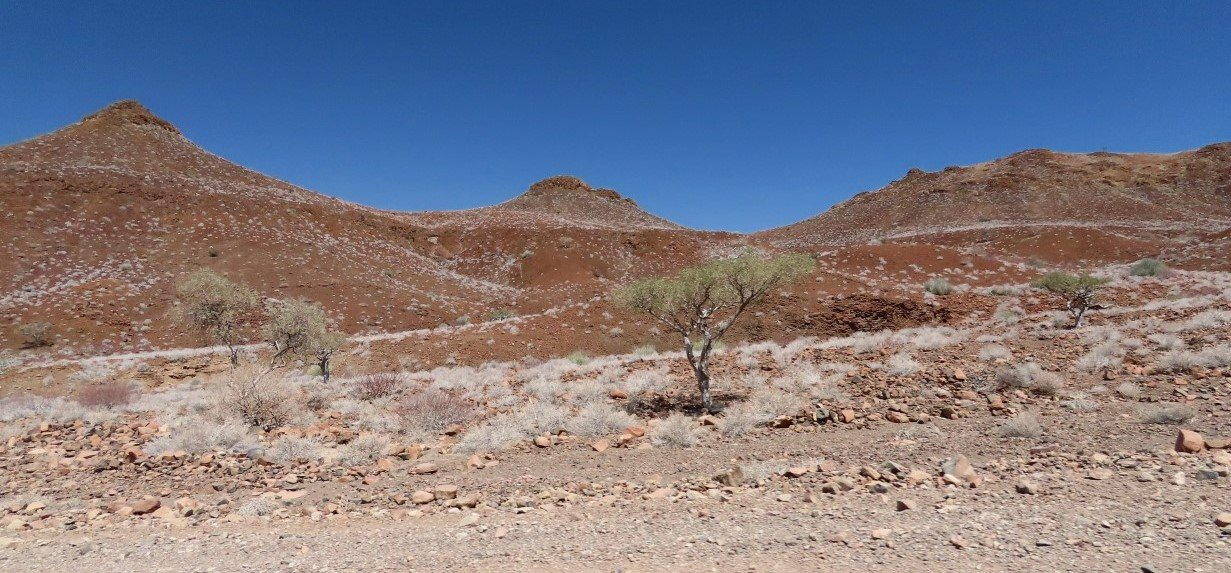
Even though we had arranged with Gavin and Lee to meet in Sesfontein a day later, we ran into them before Palmwag. Lee reminded us that at Palmwag we would be crossing the “vet-line”: with foot and mouth disease causing problems up north, there is a strict control about what you bring in or out. Seeing that the problem is actually in the north, we kinda presumed that they were not as worried of stuff coming in, as what they were of diseased stuff going out south to the rest of Namibia. We had packed away some of our meat and dairy products, but we passed through the control point like a breeze.
We still expect little villages when we see a name on the map but at Palmwag we had to realise once again: going more north a name on the map could mean anything from a few mudhuts to an actual settlement with basic shops, a pub and a petrol station. Although Palmwag had the petrol station and the vet control post… there was nothing else. We continued a bit further and when Moglet caught up, we pulled off on the side of the road, with amazing views over the valley all the way to the mountain ranges in the distance. We enjoyed supper as the sun went down and went to bed.
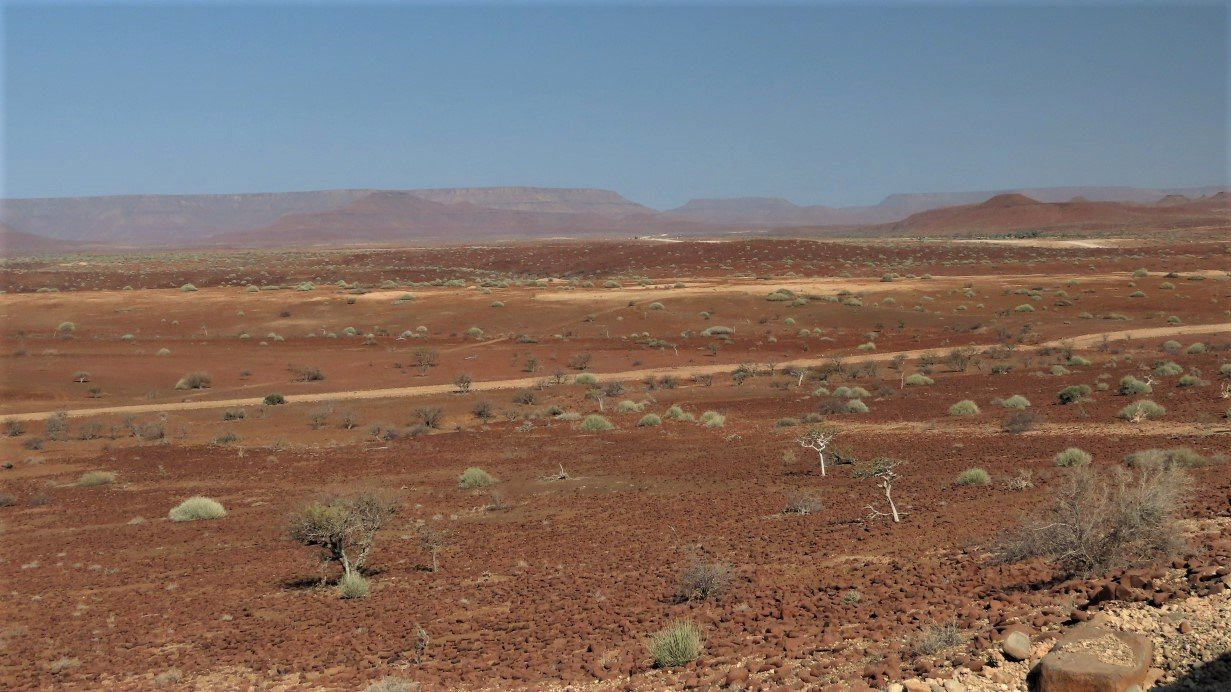
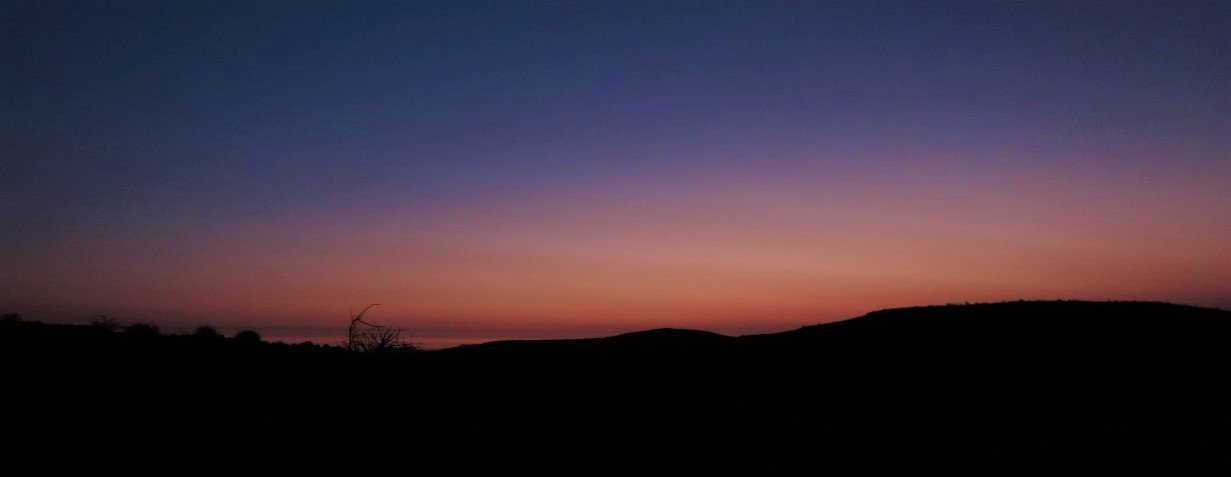
The following morning we didn’t dawdle too long: we wanted to reach Sesfontein reasonably early in the day, so that we would have ample time to book in at a community campsite and do laundry and all sorts of other housekeeping duties before hitting the real serious section of Kaokoland.
The landscape was a carpet of orange with tufts of drab green shrubs, dry trees and a few giraffe and buck. It was on this part of the road that we saw our first Bottle Tree. We first thought it was a Halfmens tree but more research on the internet has proven us wrong: it seems that they are related to each other but a bottle tree has the typical "bottle " shape, with little branches on top, while the halfmens is a more tall and spiny cactus tree. I made Stefaan stop Trokkie so that I could get out and wander a bit closer to these weird trees. At one stage another car stopped and I heard the driver chat to Stefaan. When I got back in my seat, Stefaan explained that the guy had told him “not to let his wife walk away that far from the car. It’s dangerous out here”.
I always walk with boots (e.g. for the snakes) and I’m always on high alert. Yes, fair enough… if a leopard or lion or wild dog would like to have a go at me… I would lose! But the only “wild” we had seen so far had been elephant, giraffe, oryx and some ostriches and they usually all scooted the moment we slowed down Trokkie or even switched off the engine. Then they run for the hills. Add to that that all these indigenous communities live slap bang in the middle of this “dangerous” environment, it surprised us that we were seriously warned about safety. I wonder if they are worried about Tripadvisor or other tourist ratings.
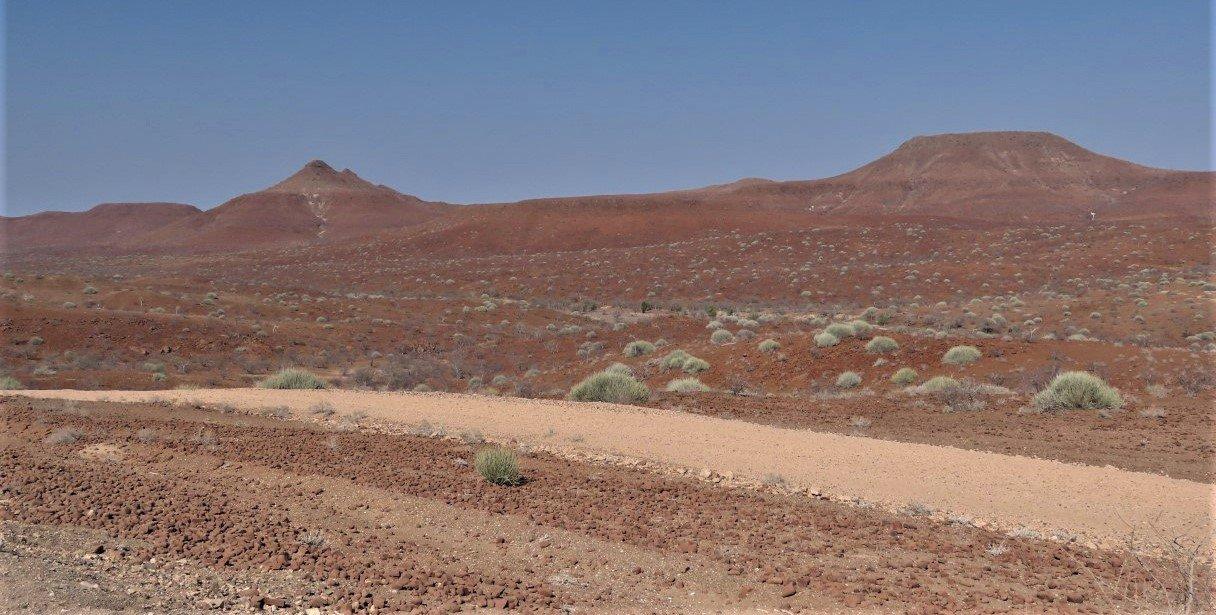
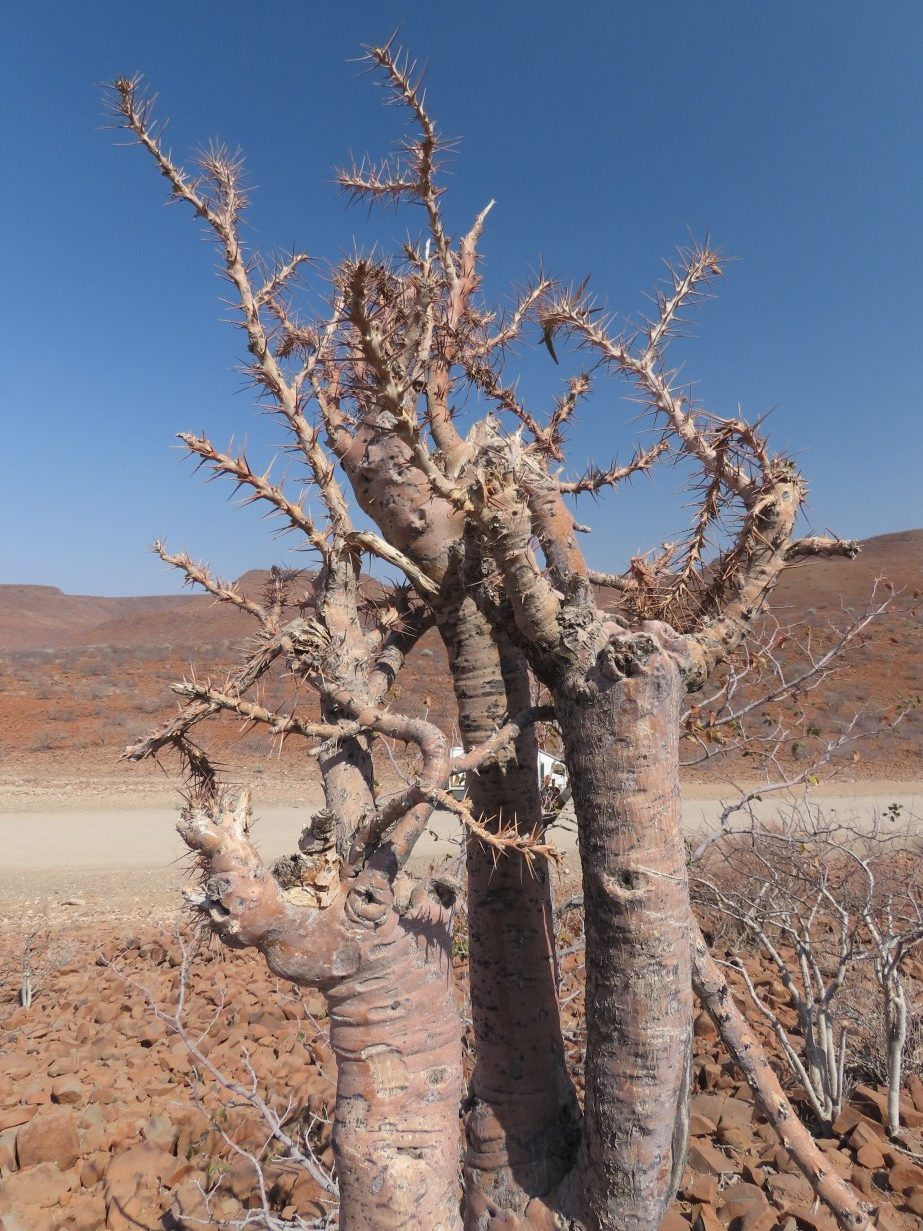
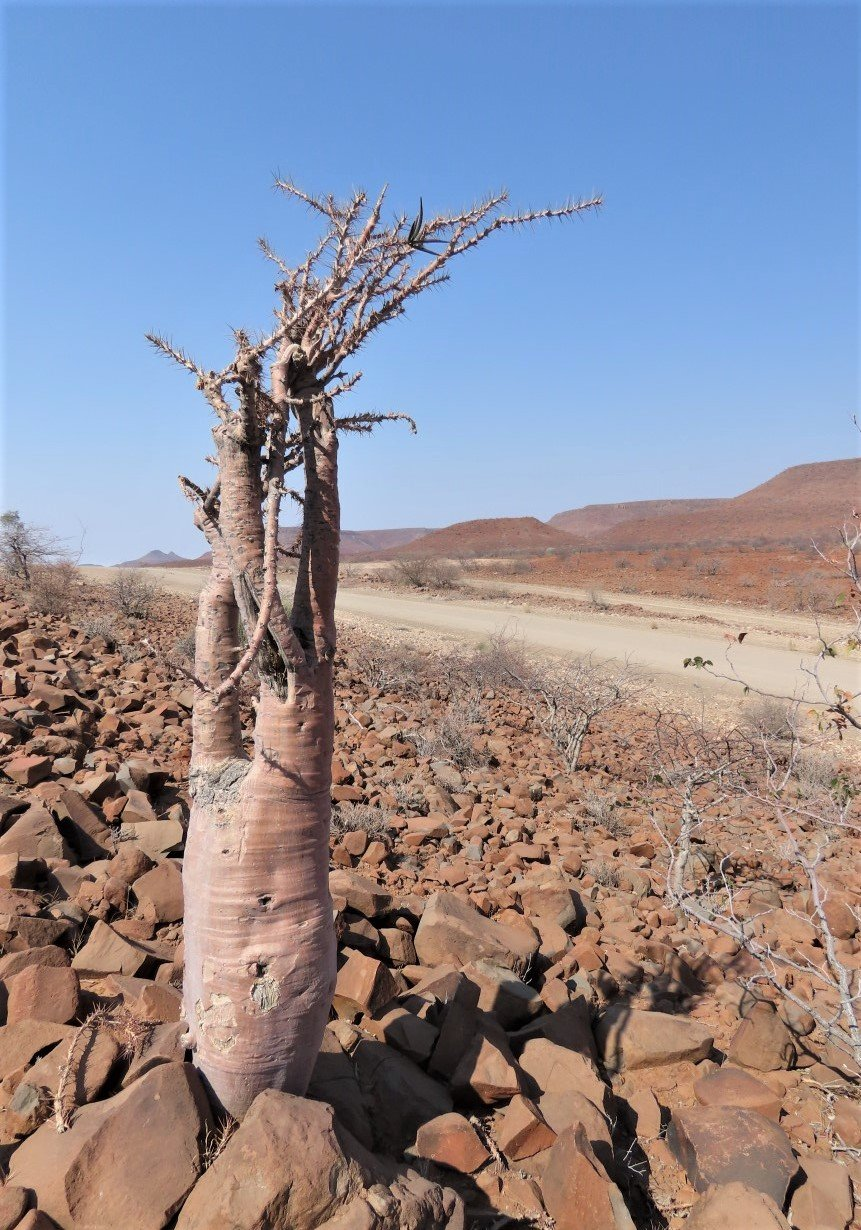
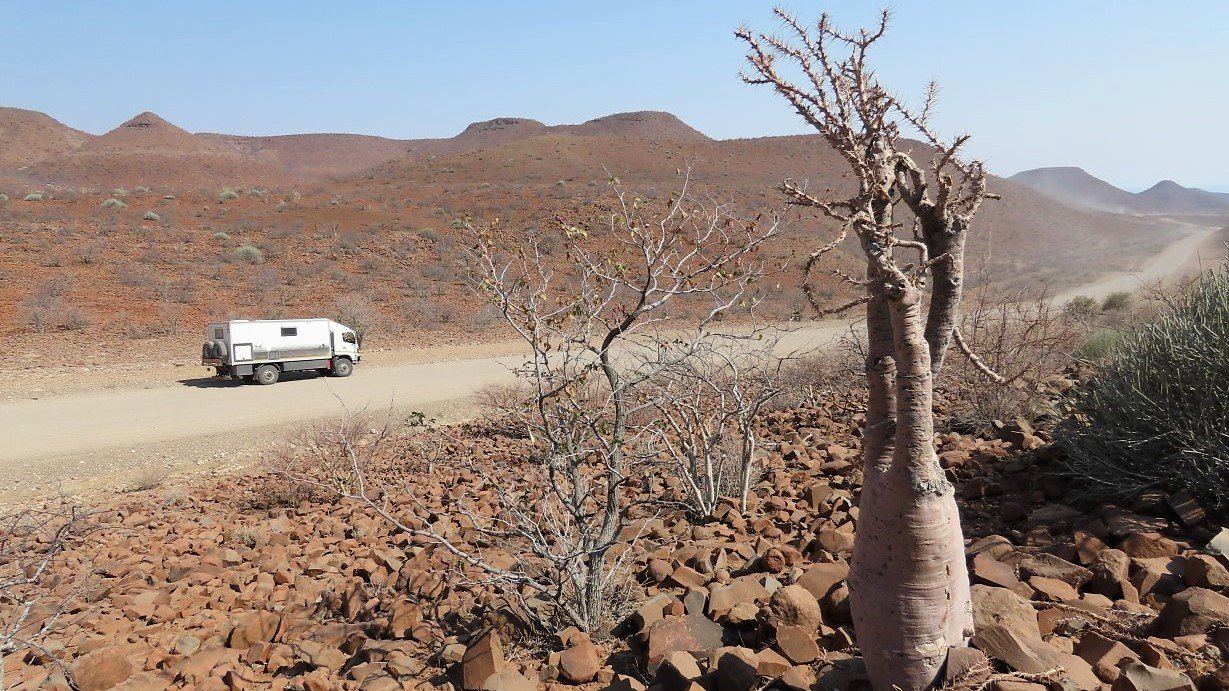
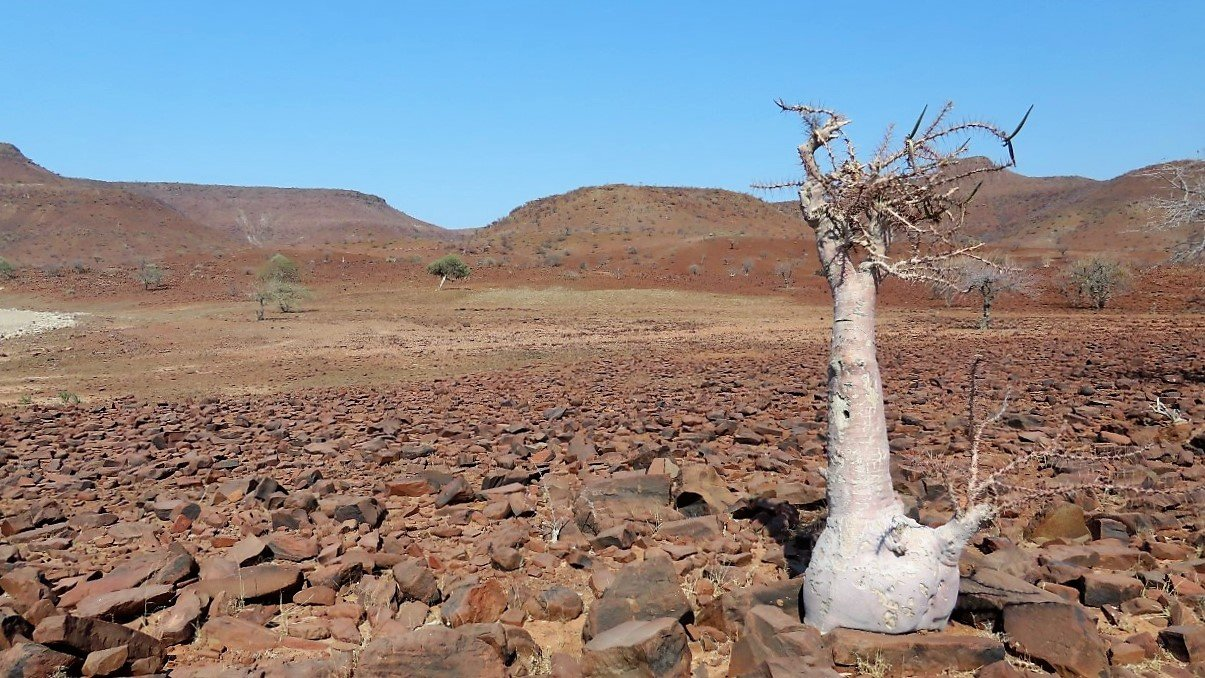
The mountains were like an abstract canvas with random paint strokes in various colours criss-crossing the mountain slopes and soil plains changing from warm orangey to bright white.
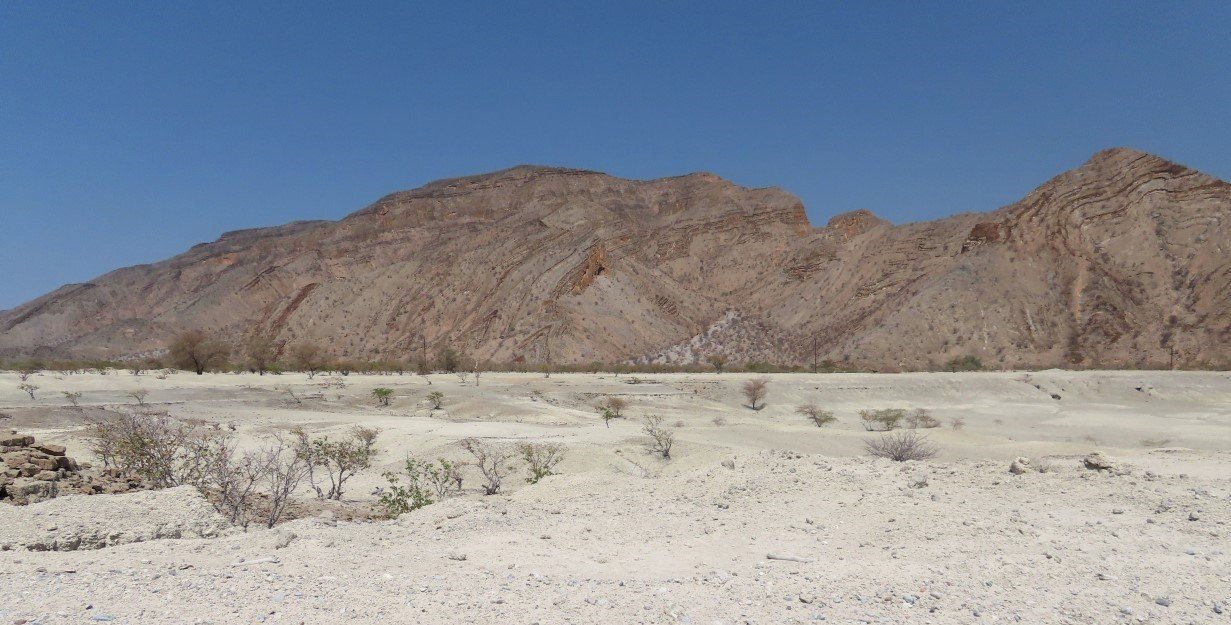
At the Sesfontein community campsite we got to work and once taken care of the household duties we enjoyed a warm evening around the braai.
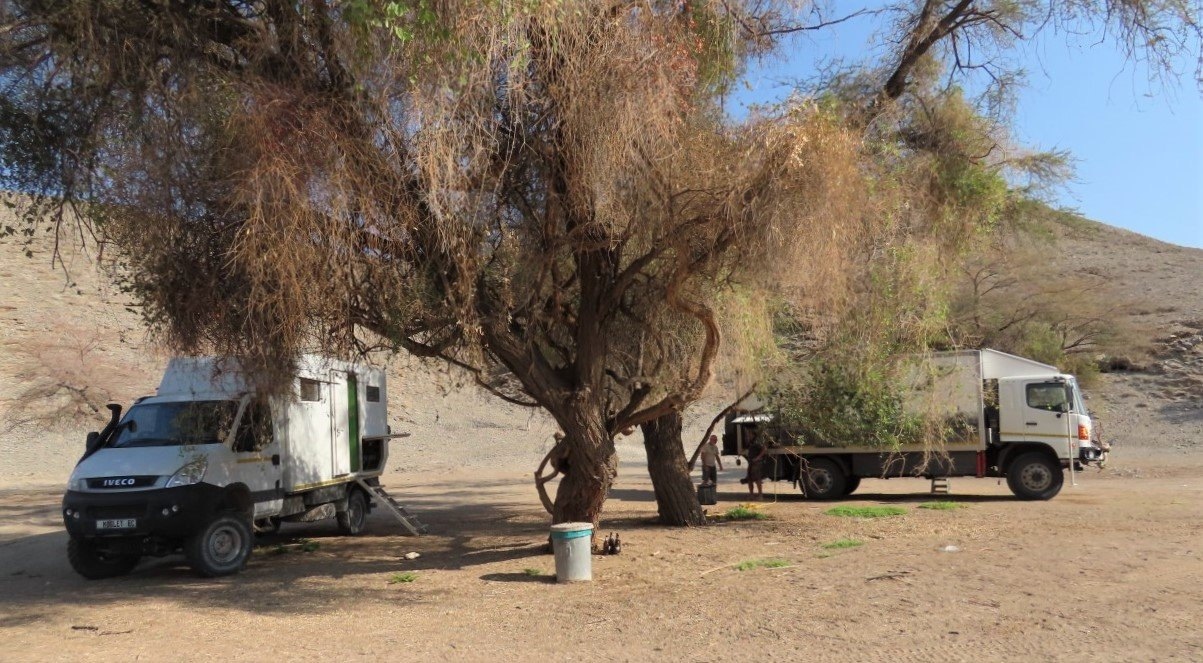
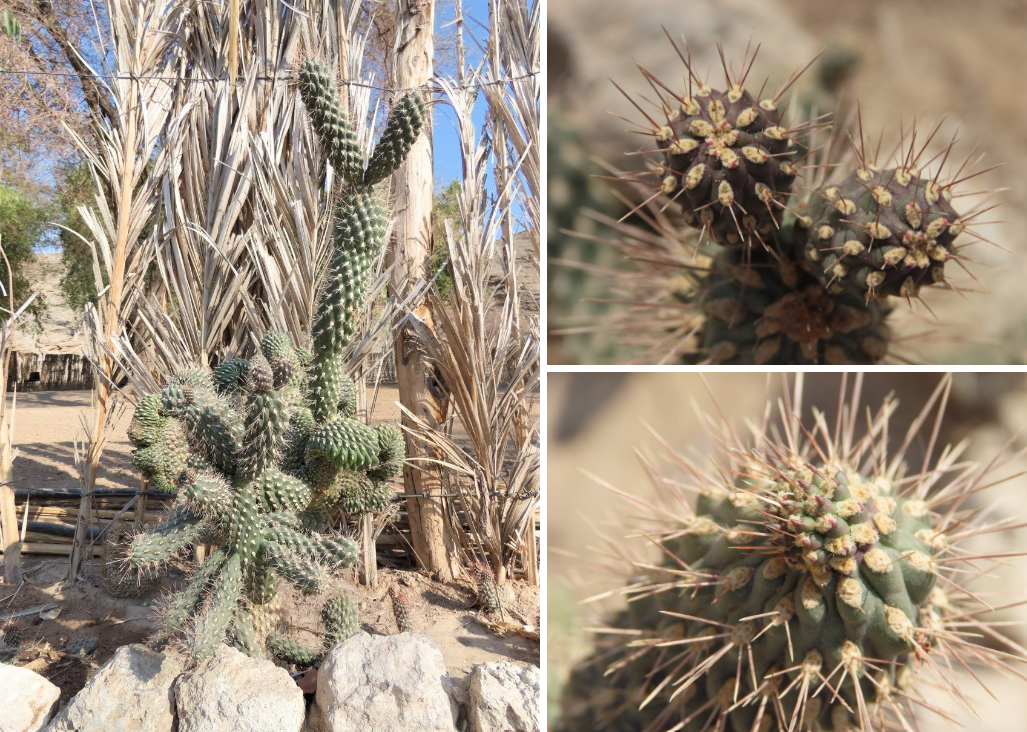
Next morning again, we didn’t want to leave too late. Going more north the maps and gps showed a variety of terrain, from sandy riverbeds to rocky gravel roads, and we didn’t want to be rushed. This landscape is mindboggling expansive and (seemingly) empty and we realise again and again how insignificant we feature in the vastness of Mother Nature.
Every nook and cranny has a certain character and the landscape subtly changes with wiry trees and shrubs etched out against the blue sky, red and white soil stretching all the way to the mountains and dull green bushes anchored in the rocky plains. Then you hit wide stretches of nothing but sand with luscious belts of green where the rivers and settlements are.
We started seeing the first mud huts and kraals of the Himba’s and the random, rather modern thombstones set into this rock and sand landscape.
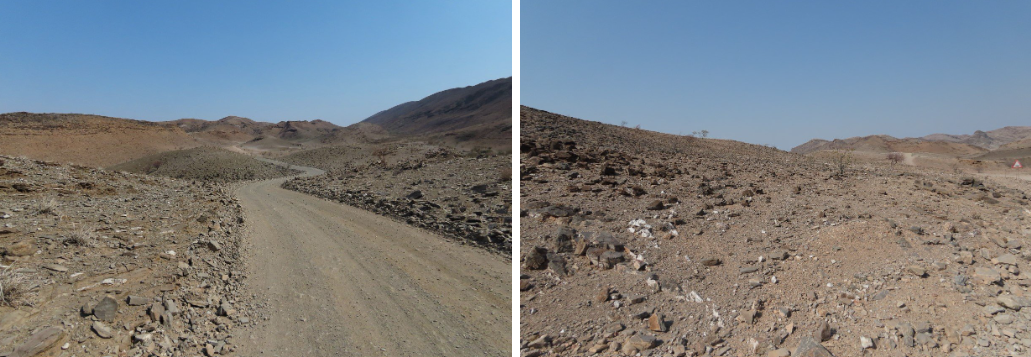
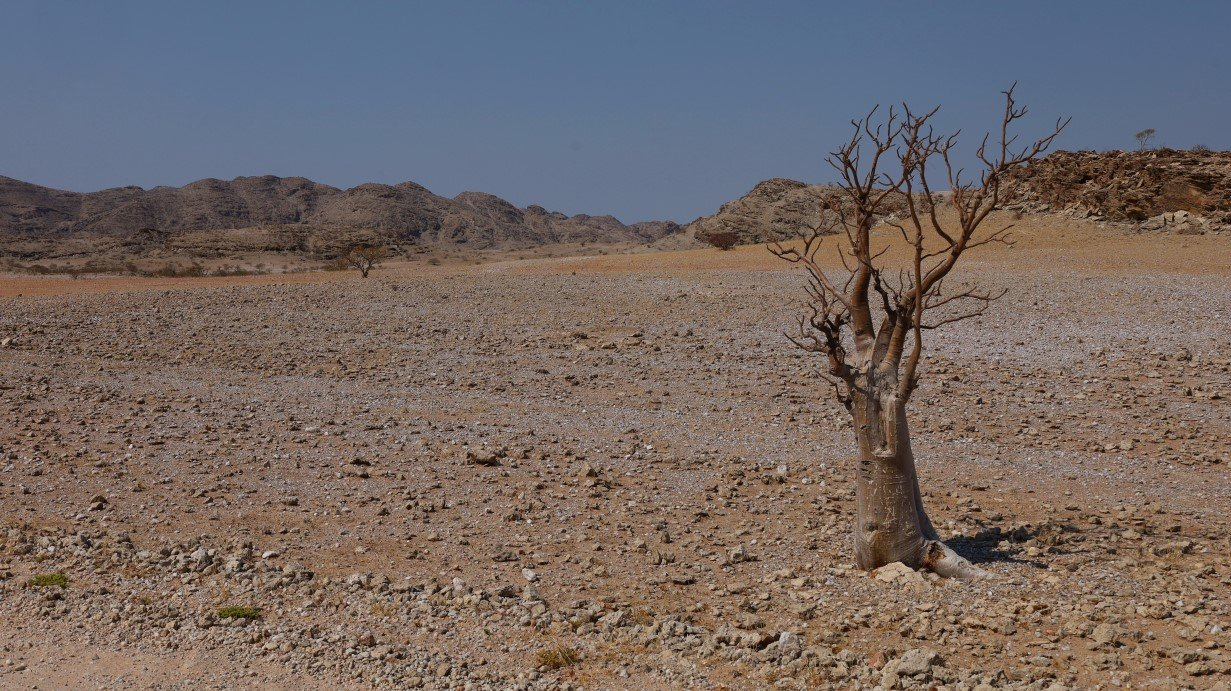
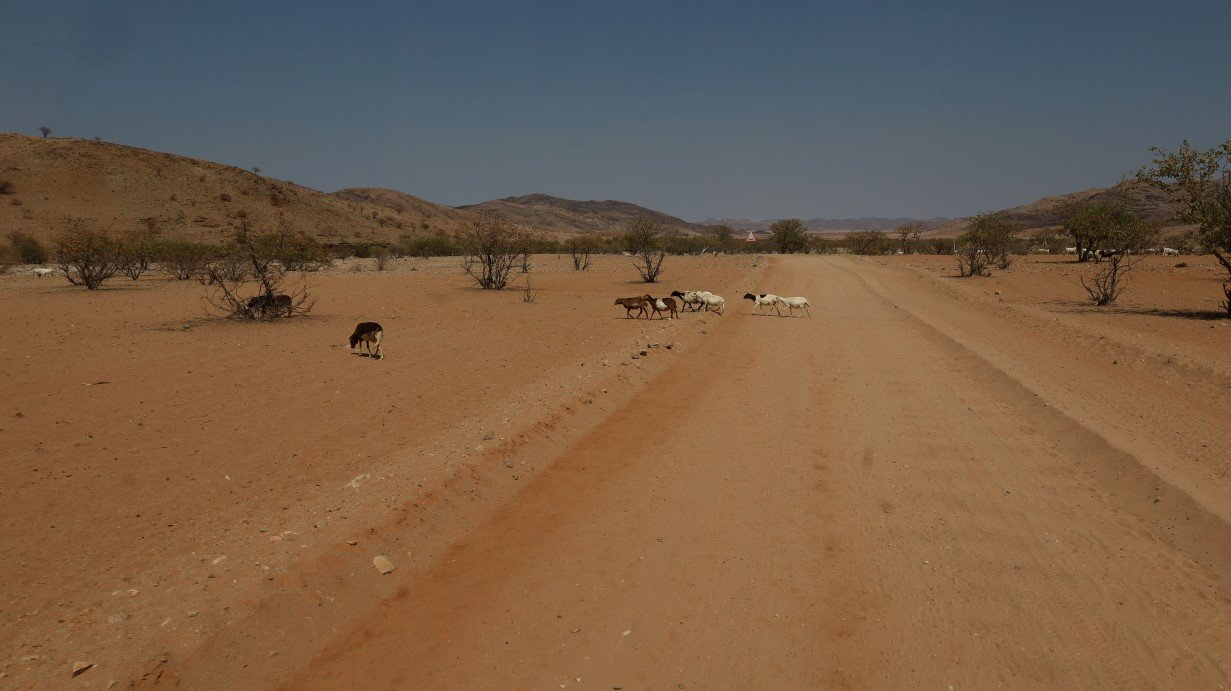
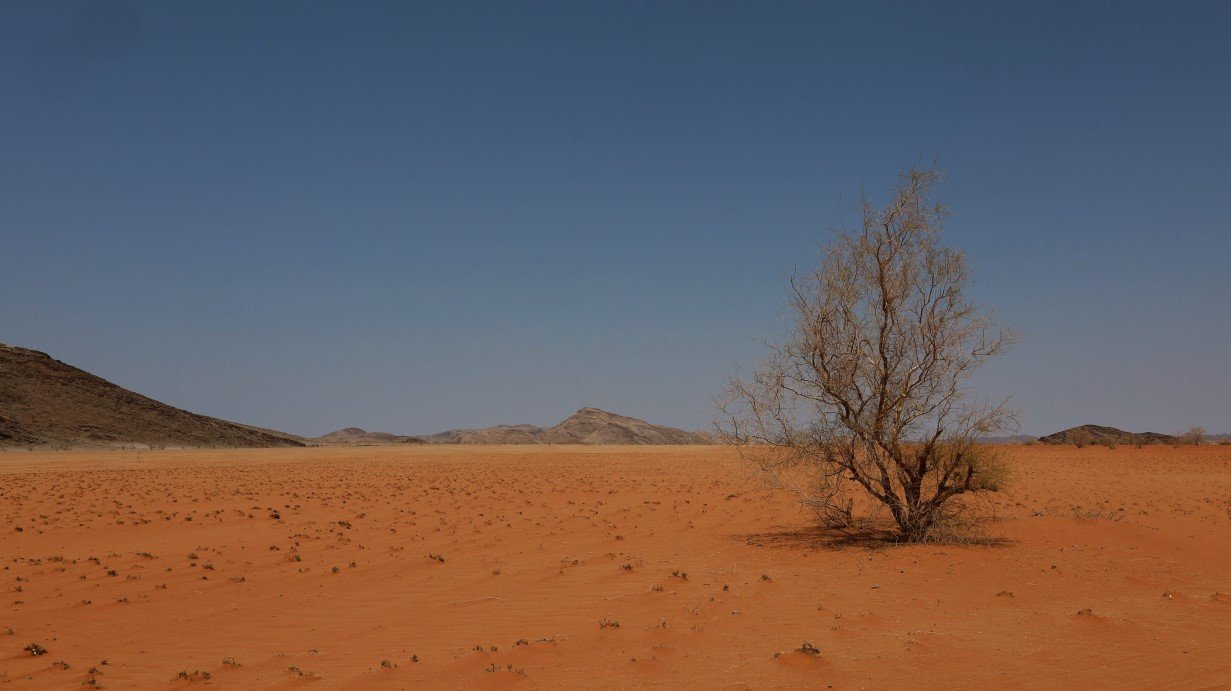
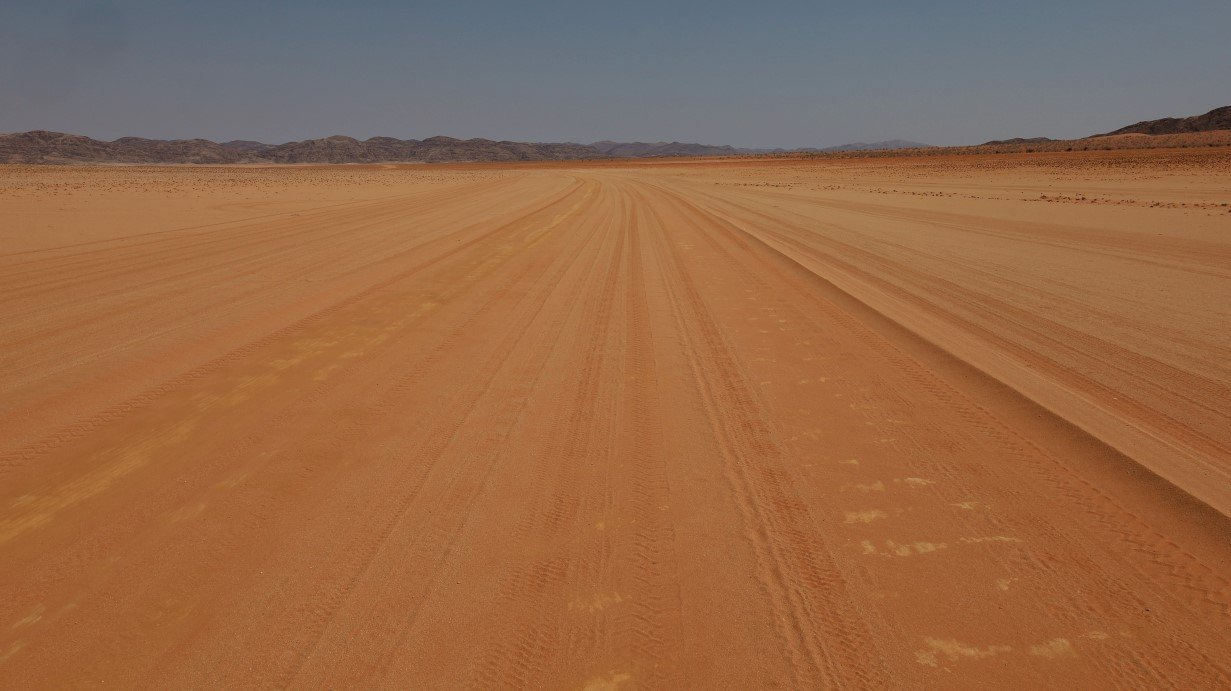

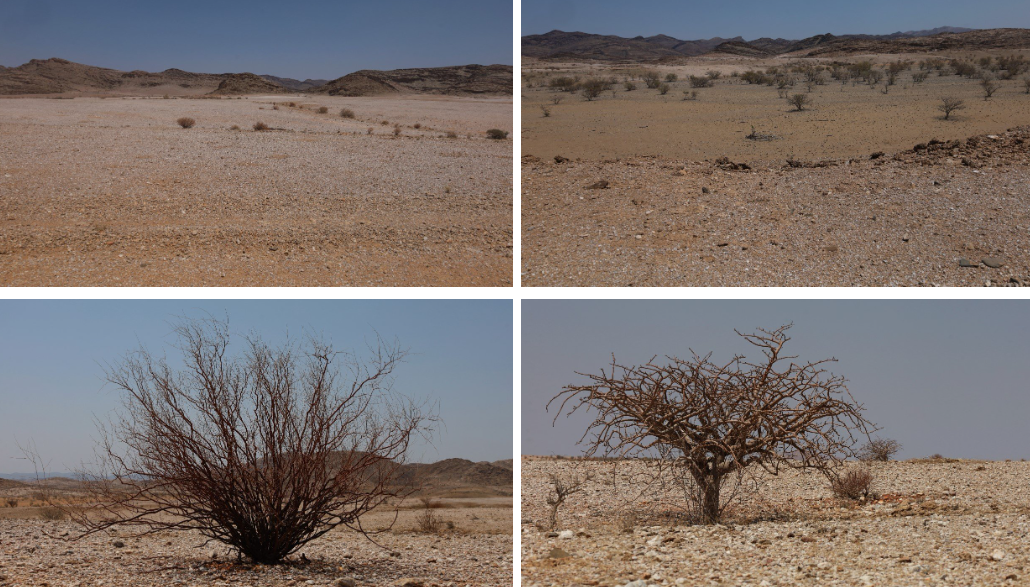
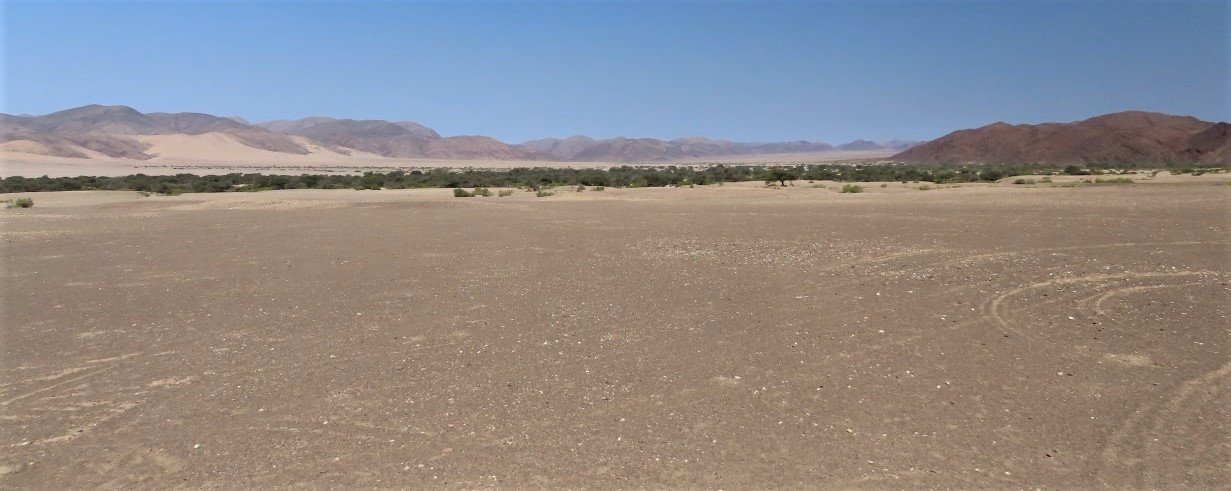
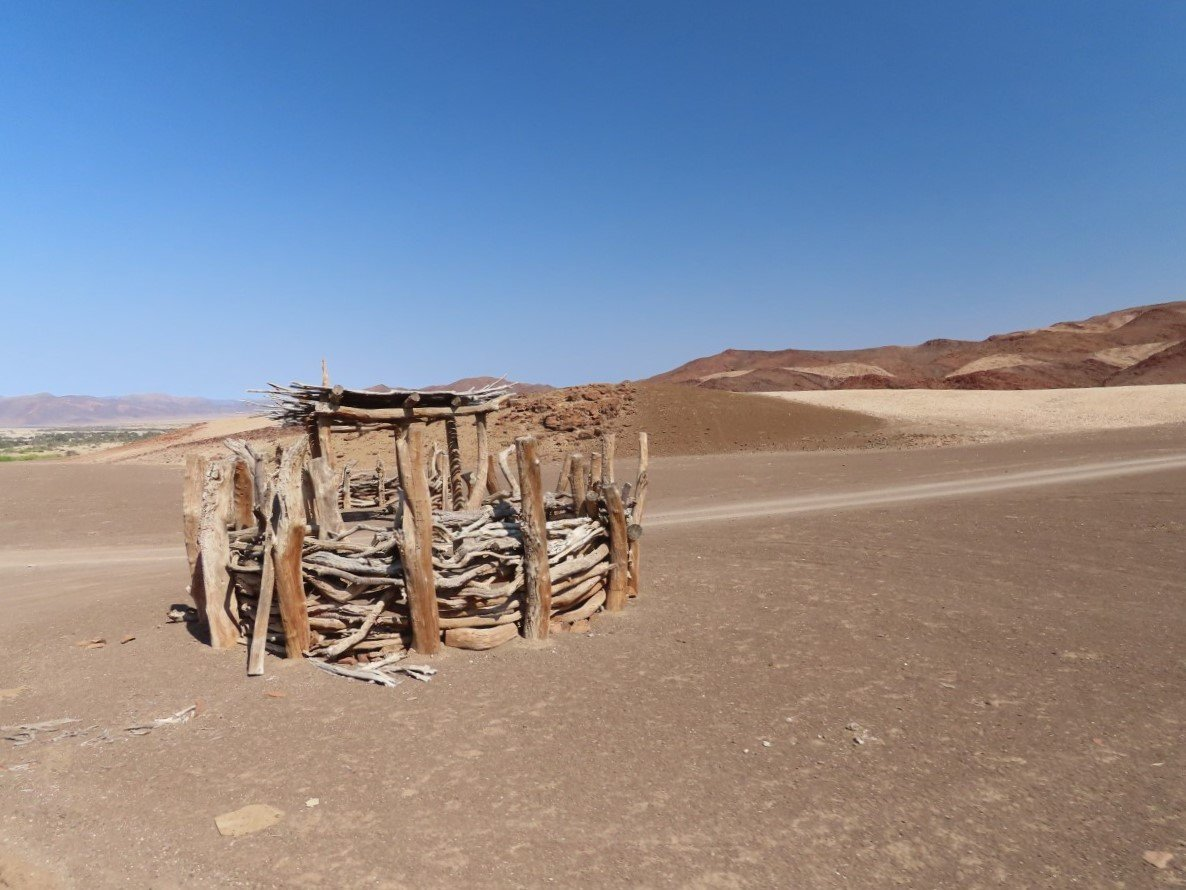
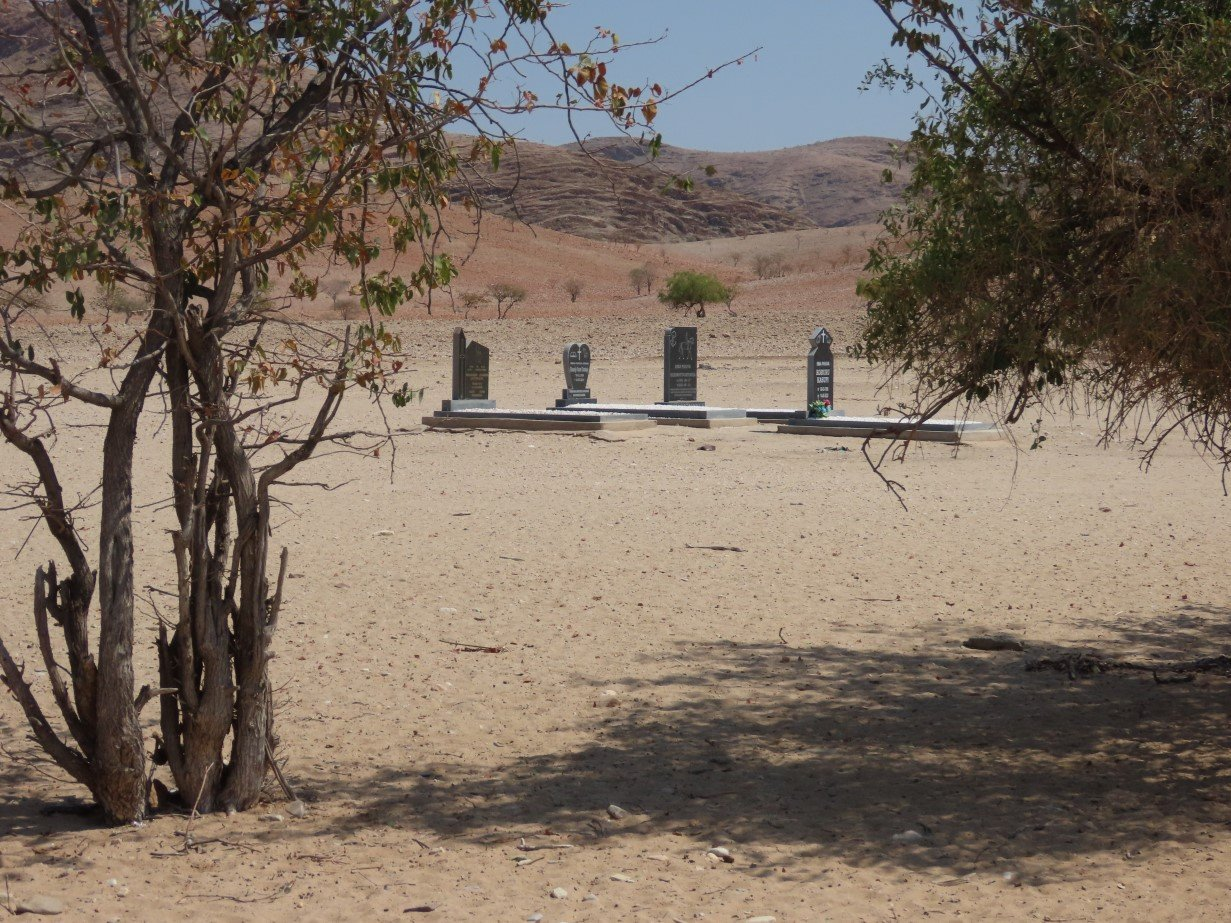
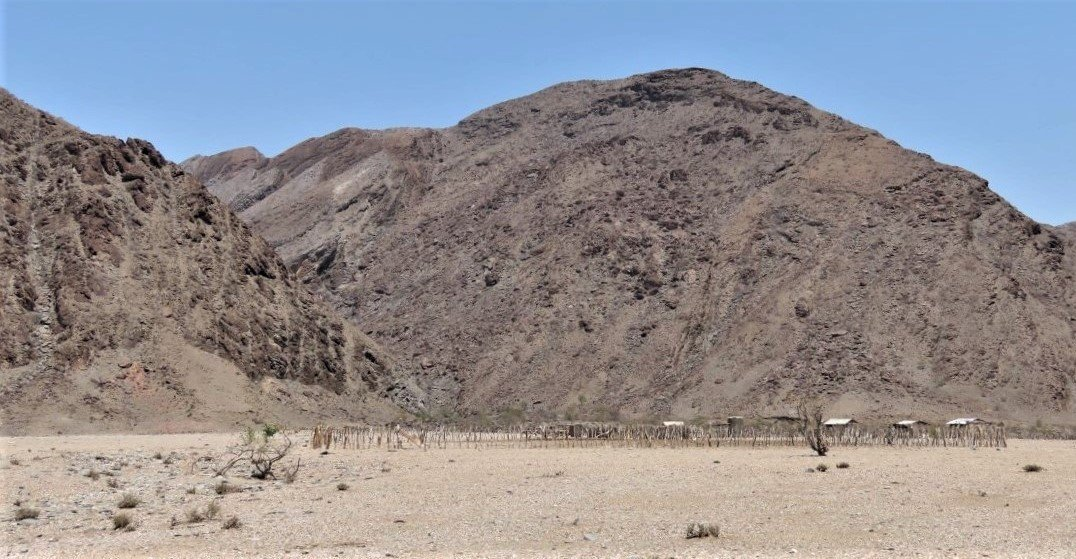
We saw the odd giraffe playing hide and seek in the trees, a dry waterfall and the telltale windsock of Puros airstrip standing lonely guard in the desert.
Shortly thereafter we went a bit offroad when we saw a little green track going to a little gorge. We got a bit stuck again, when parking, but eventually got it right and settled for the night.
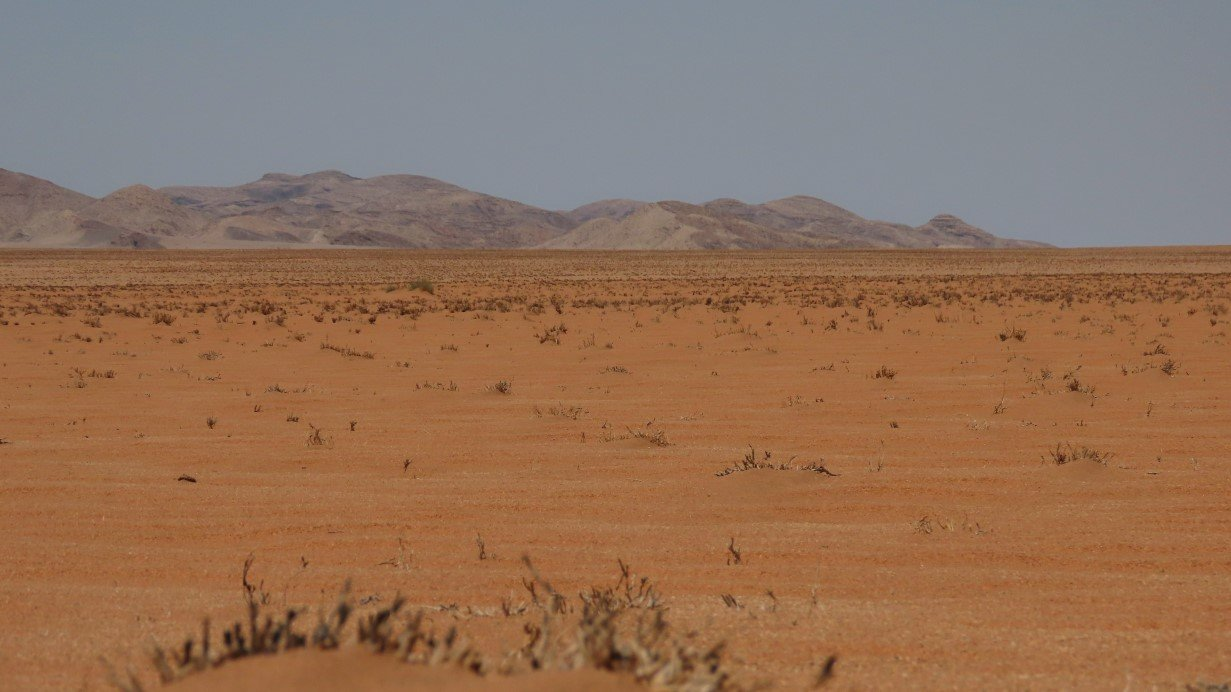

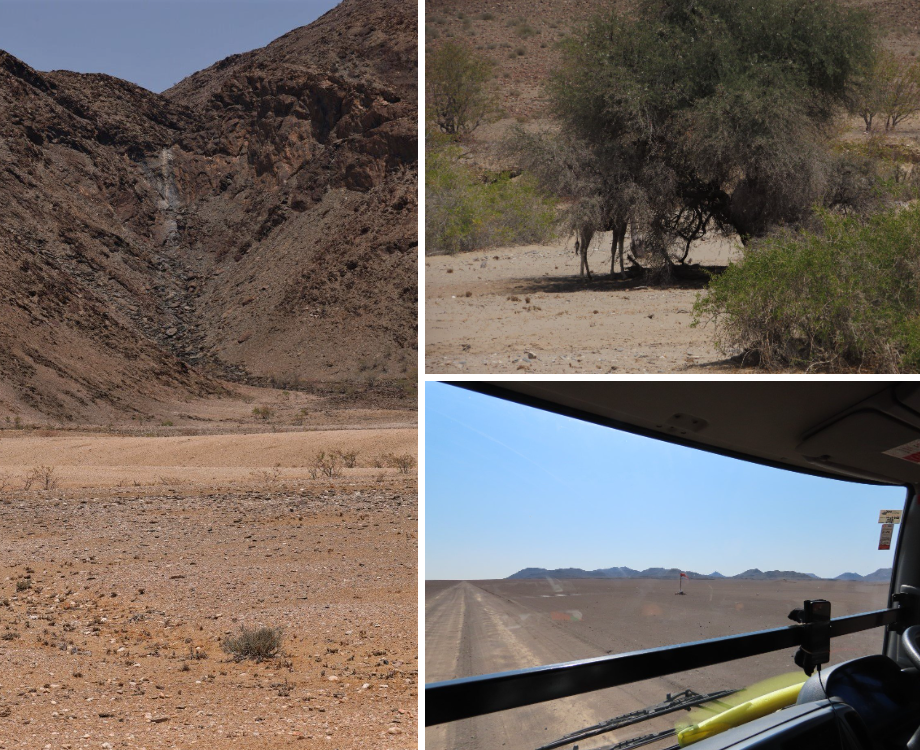
Next morning we woke up to an overcast sky and when we left the gorge back to the main road, we could see clouds hanging low over the mountains. This was the desert in a different way.
Almost behind every turn in the road or uphill or downhill there were new views of the ever changing desert landscapes and all of them awe inspiring and jaw dropping. There is something about the openness and never-ending horizons that so speaks to us! To spot animals in this environment is an art in itself (it reminded us of the old Afrkaans saying” soek die vleis en wen ‘n Datsun” (Find the meat (in a stew) and win a Datsun)). Two springbok virtually became invisible against the orangey-white background of the desert. (bottom picture)
We saw a herd of gemsbok, but they were very skittish and before we knew, they had disappeared over the hill.

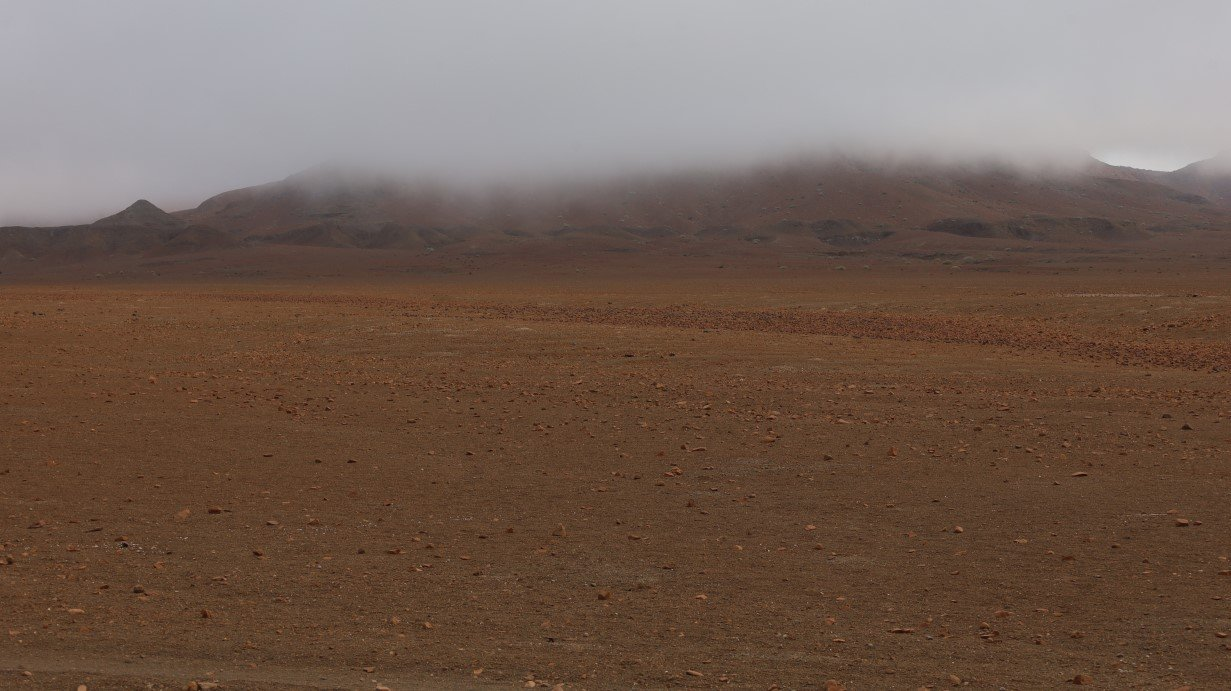
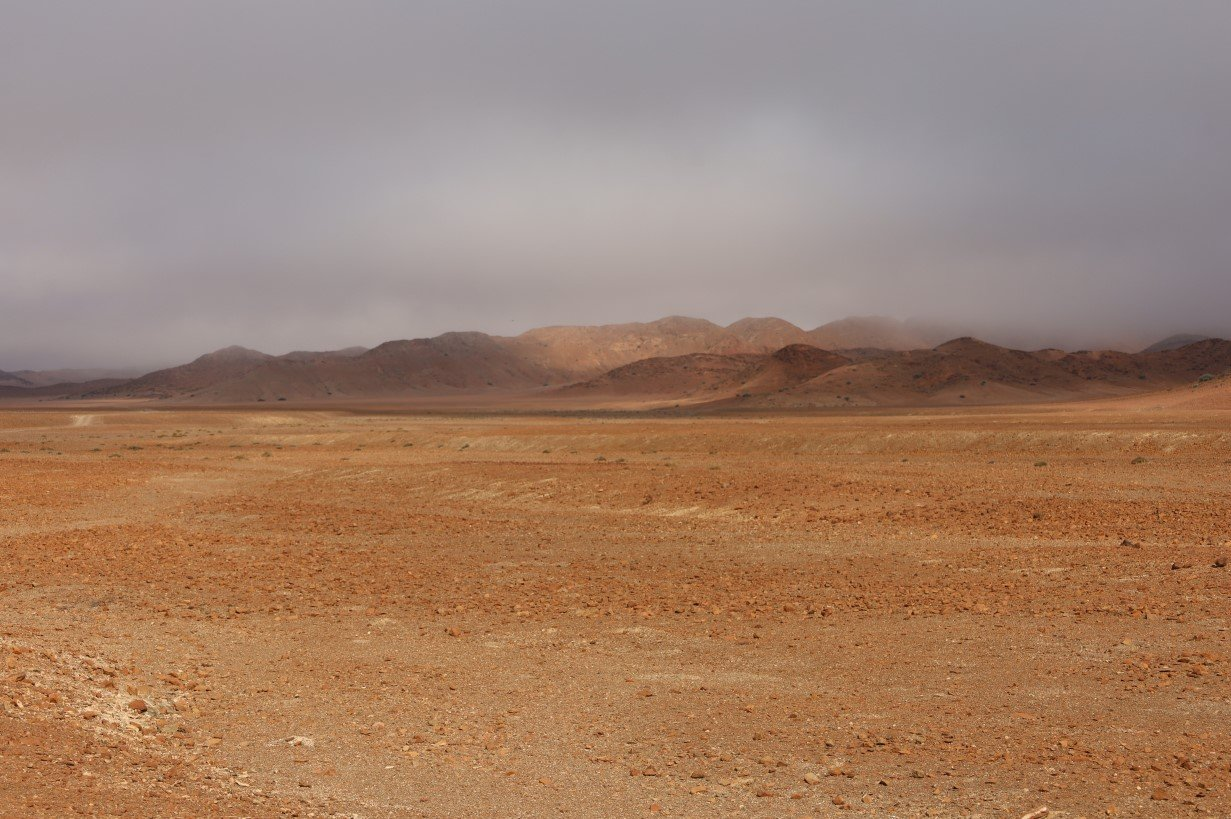

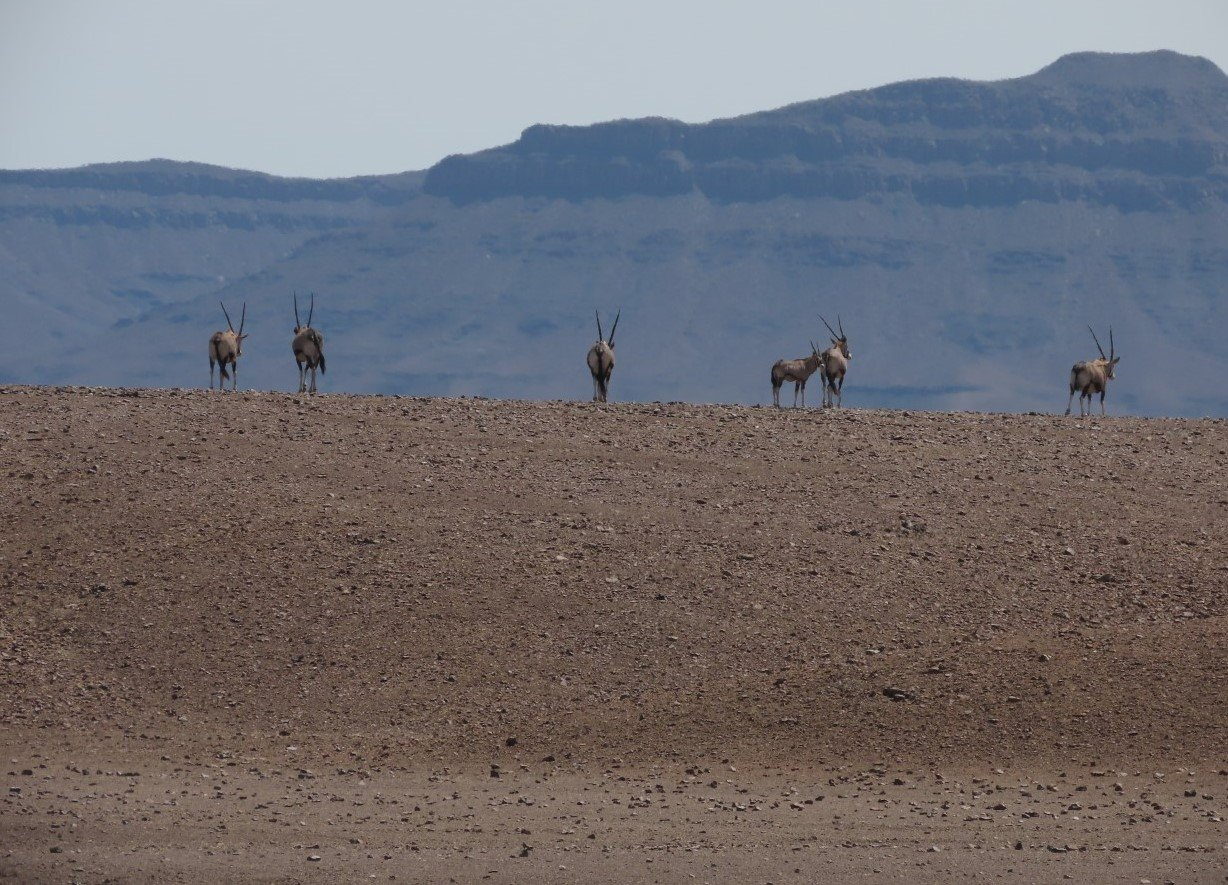
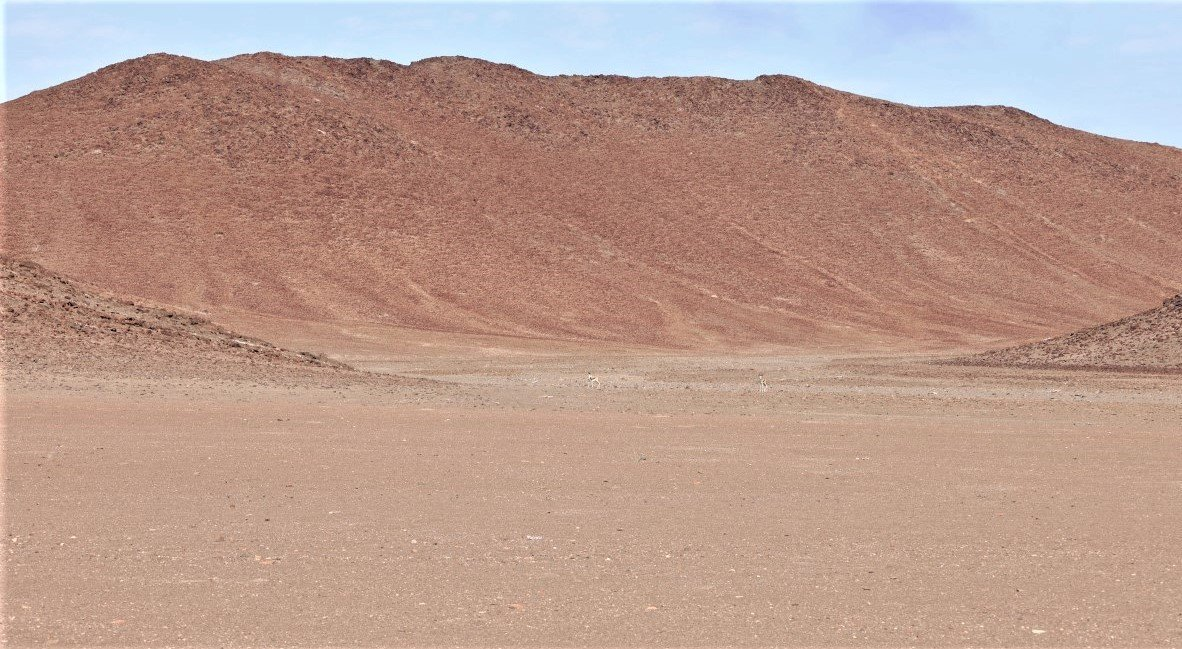
At one stage we saw something on the road in the distance: it moved to fast for a pedestrian, but we also decided it was not a motorbike. When we got a bit closer we saw they were two young guys on bicycles! They had started their bike trip 10 months ago in France! Amazing! They seemed to be ok for water, but when we asked if they needed something else, they said that they only had pasta for supper and they didn’t know if they could make the next village and find a shop before dark. So we helped them out with a bit of food and waved them on their way.
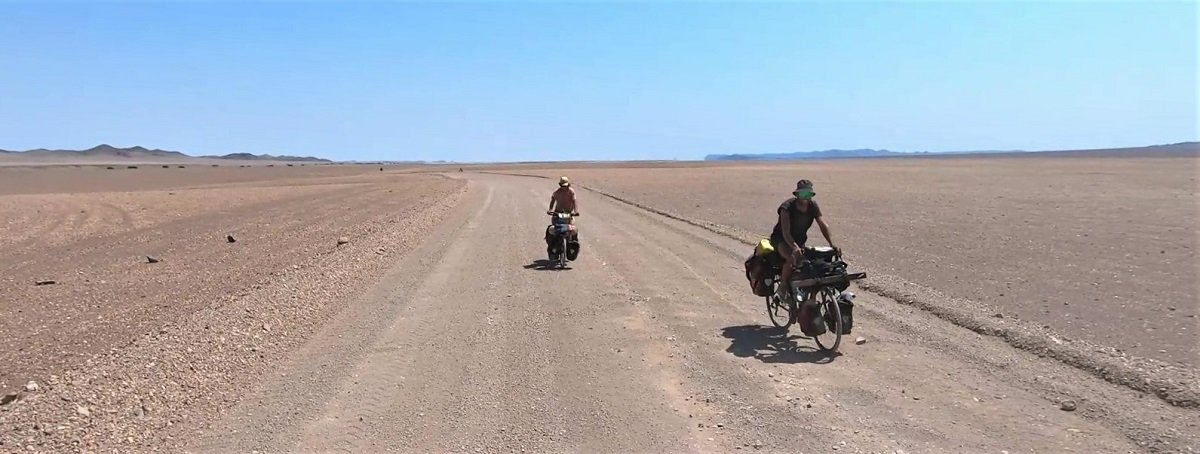
Further down the road we came to a screeching halt (if that would be really possible with Trokkie) when we saw a man sitting on a little mount of rocks. By closer inspection it seemed to be a little sculpture of a man: it was numbered and made reference to possibly other numbered ‘stone men’ out in the desert. Needless to say… we had now an extra purpose when driving through the desert. And we found a few more! One sitting on top of a rocky outcrop overlooking what seemed to be the local restaurant for foraging wildlife, because the place was littered with rib cages and other animal bones!
Where we had found the first meditating ‘stone man’, we climbed the rocky outcrop to see him up close, but when we looked at the rocks we thought that this could very well be a mound of petrified wood. Wouldn’t really call it a forest, but some parts of the rocky outcrop definitely showed signs of tree-year-rings and bark texture. We live with the hope it was indeed petrified wood!
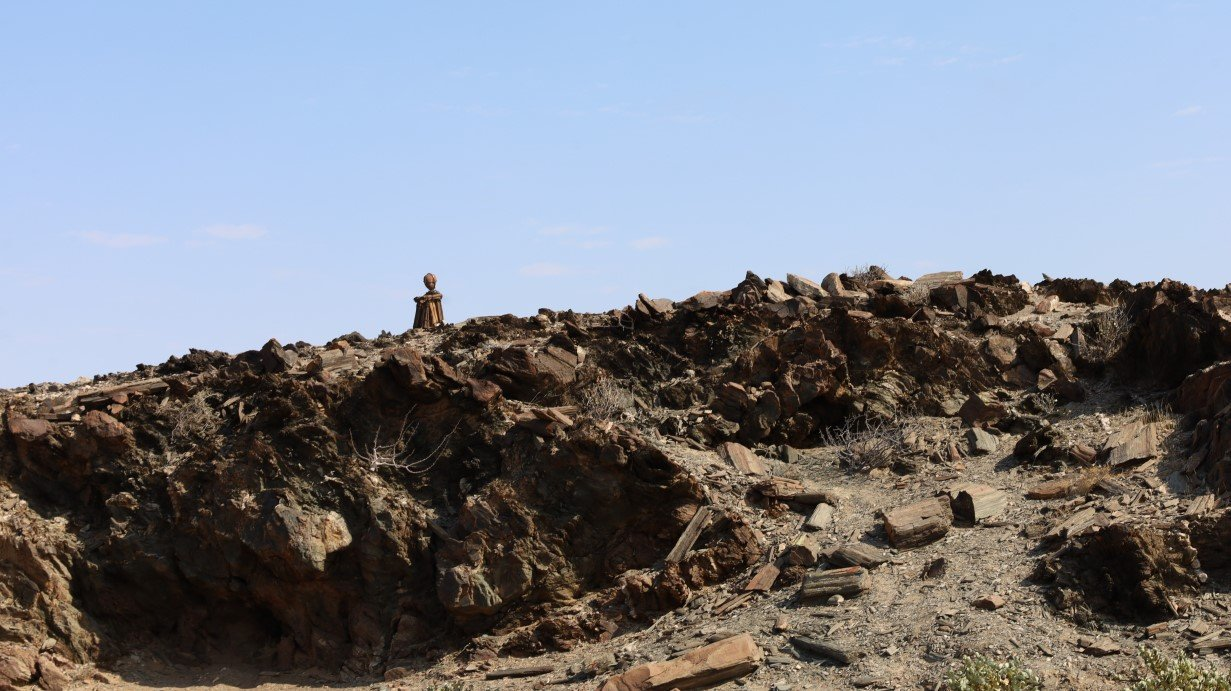
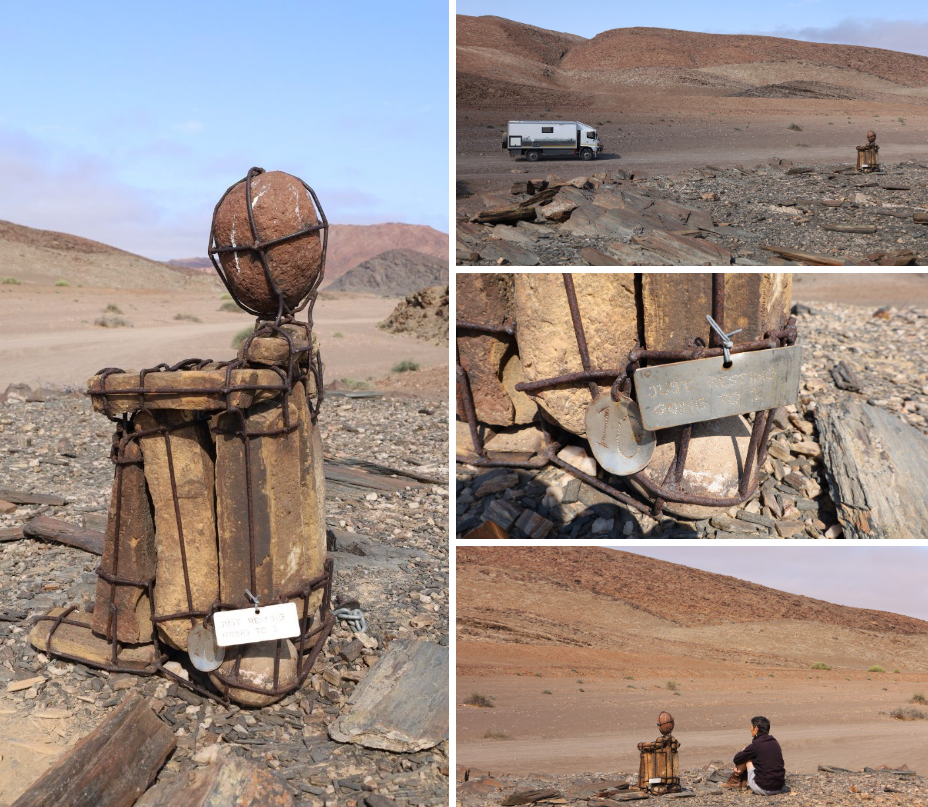
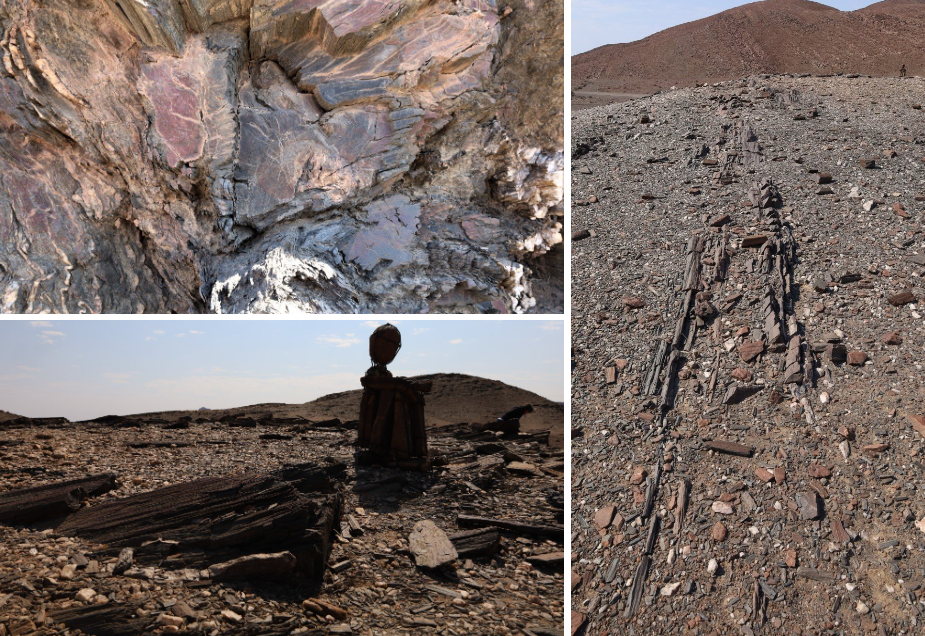
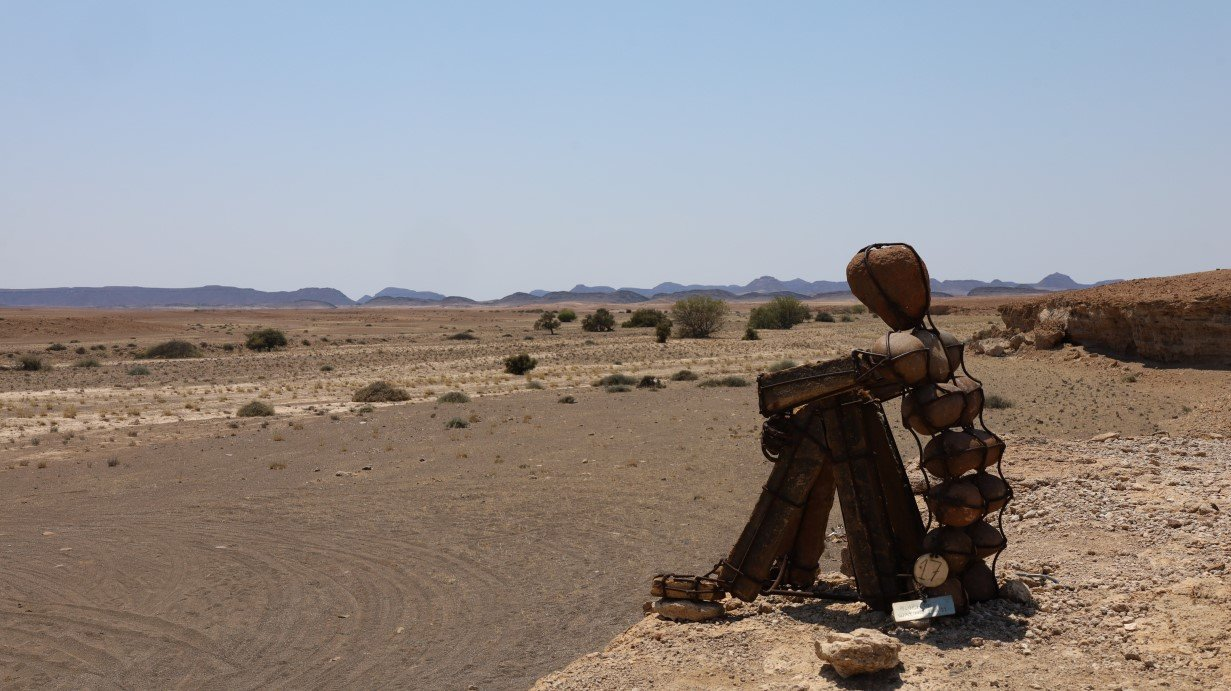
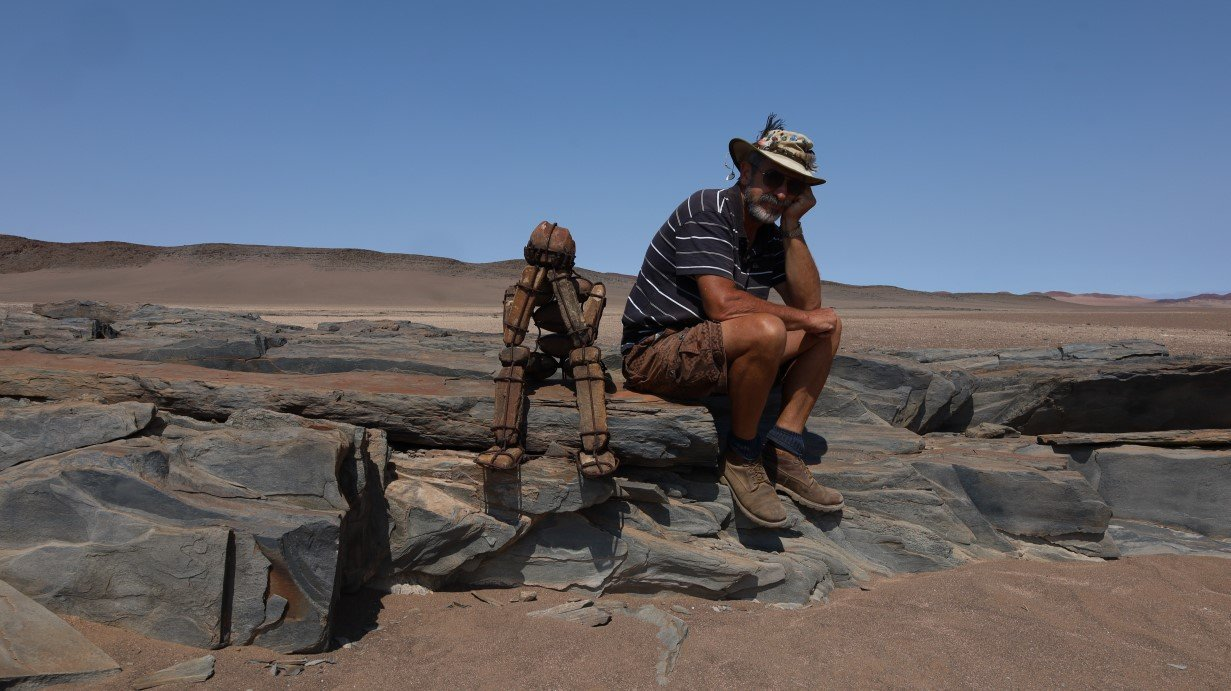
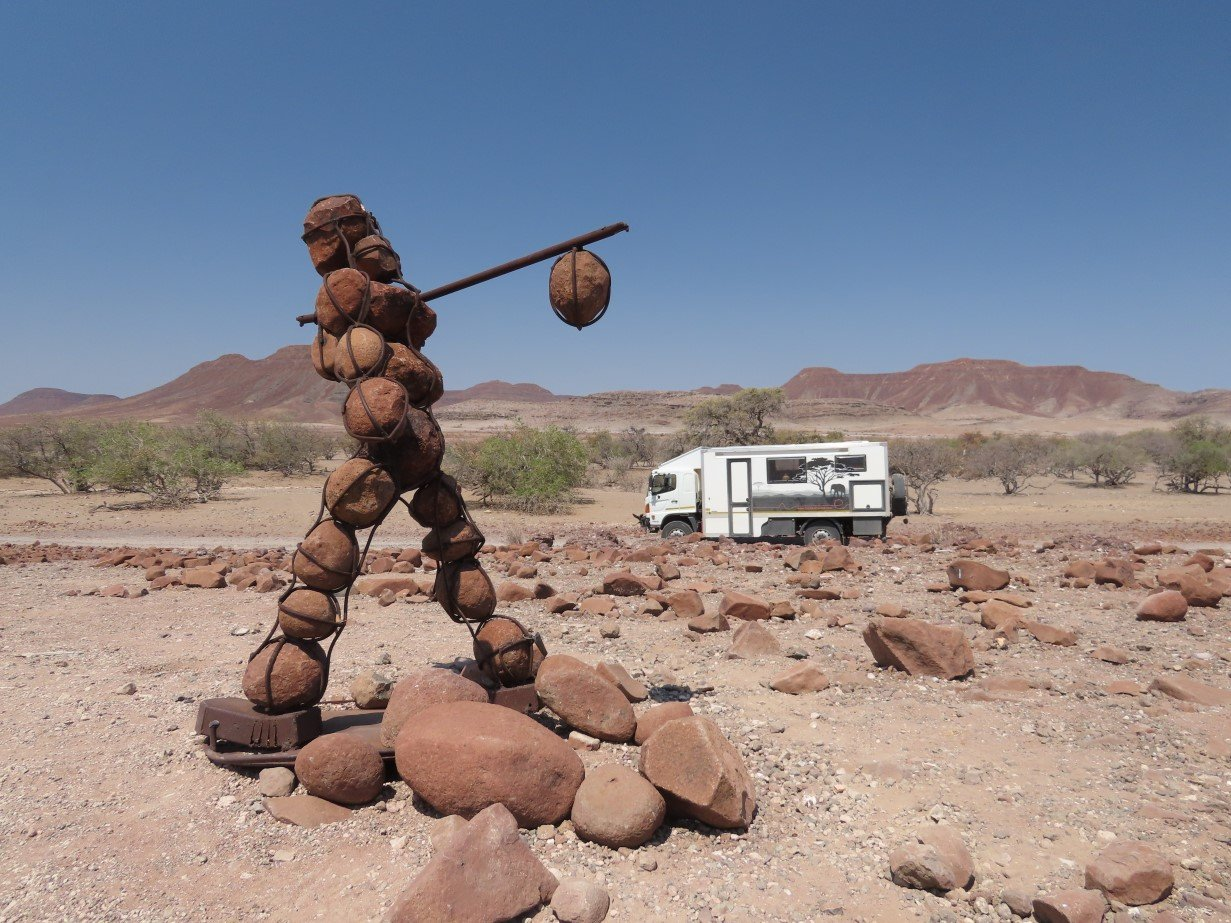
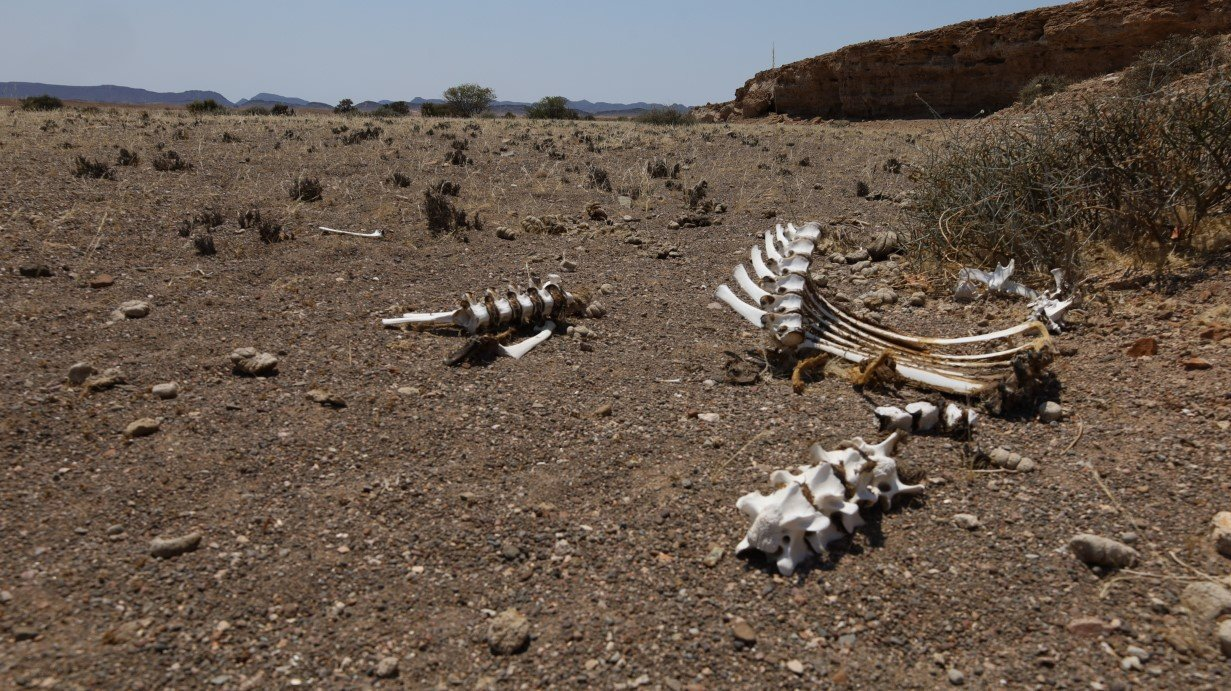
A bit later we passed a small settlement (a few huts between the sparse trees). A few km outside the settlement we saw what looked like a drum far afield and we decided to go and have a look. We walked up to the drum, but, getting closer, found it was actually a mud hut. We think it serves as shelter when the locals herd their goats. The basic reed frame was covered with dried dung paste and you could see all the hand prints in the paste. There was a kraal for the goats and we could see a small version of his hut sitting on the ground next to the hut. We thought that maybe this is how the herders teach their children to build shelters and huts, for whenever their day comes that they have to spend longer periods of time in the field with their little herds.
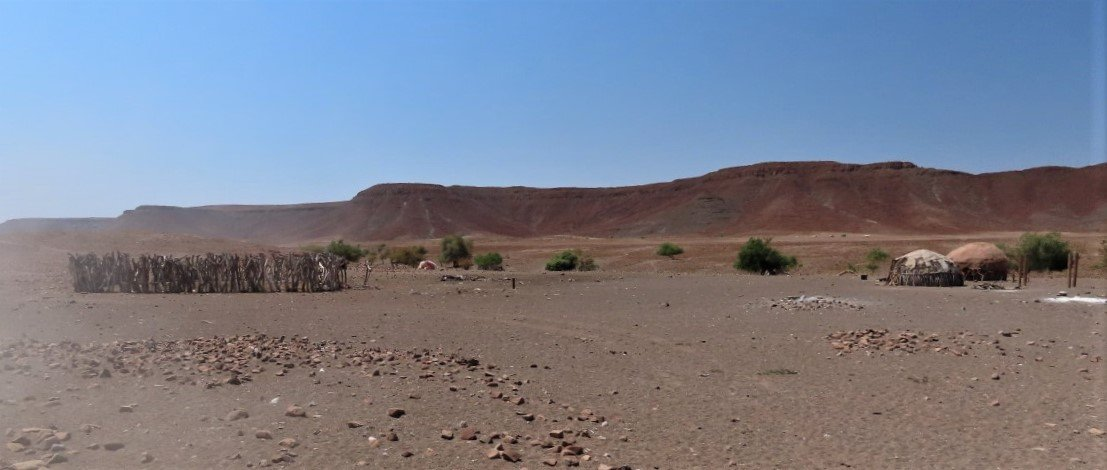

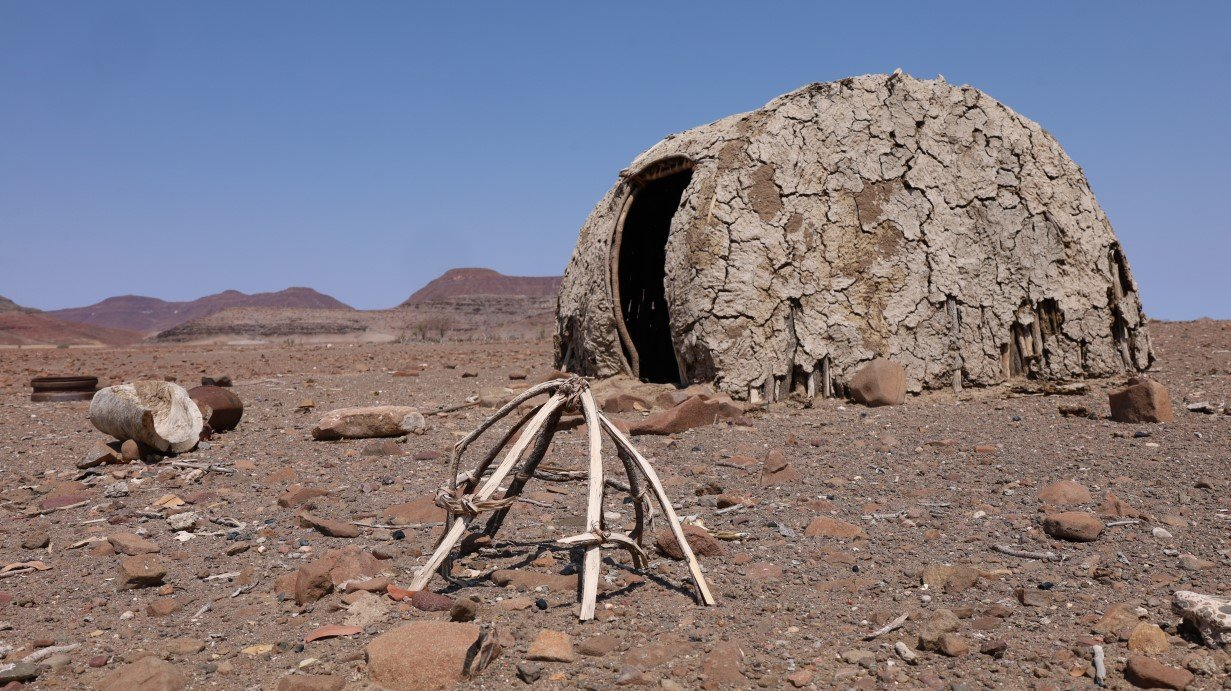
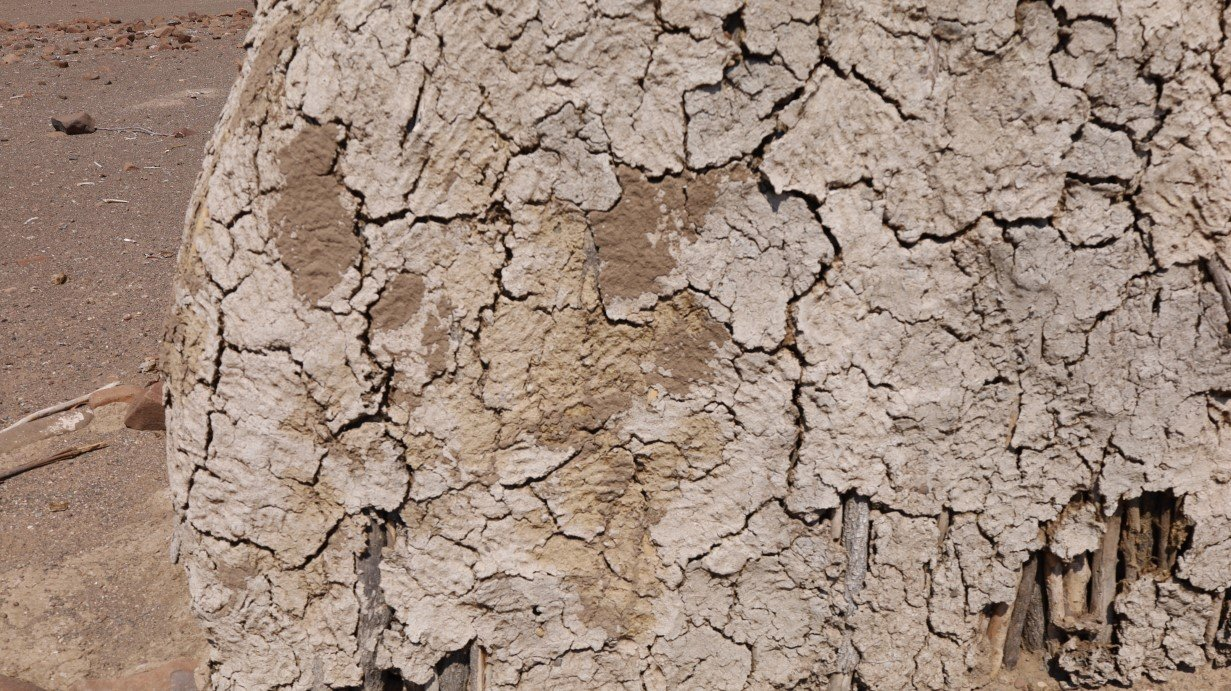
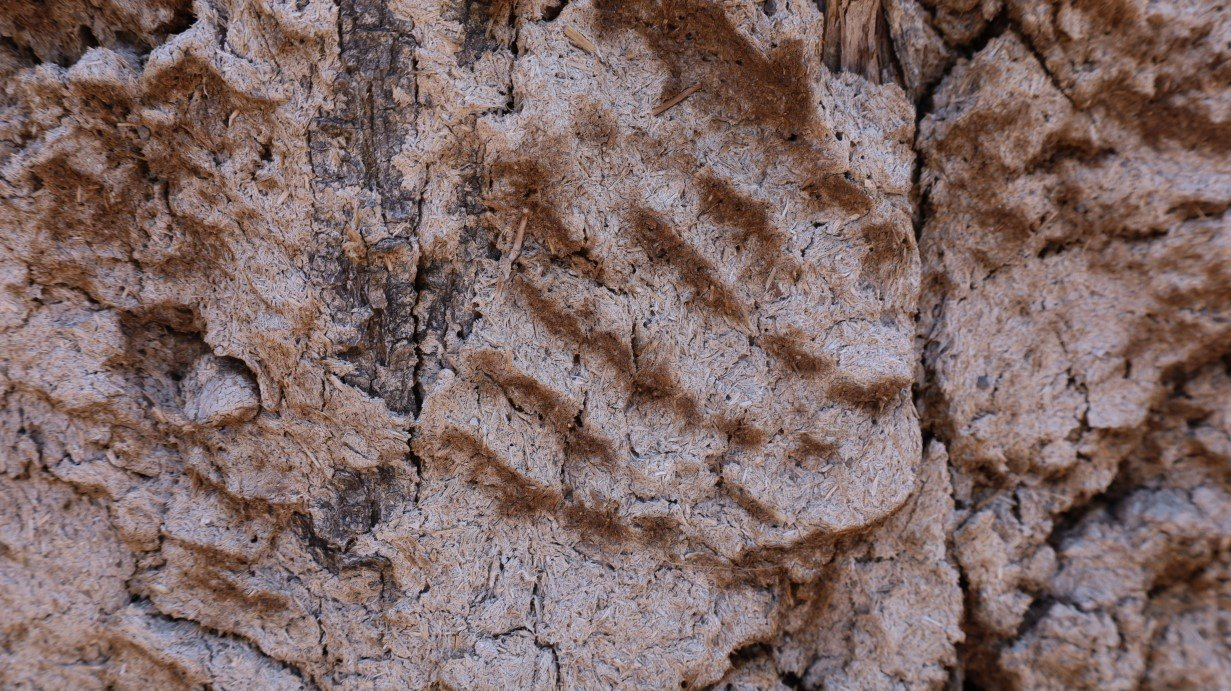
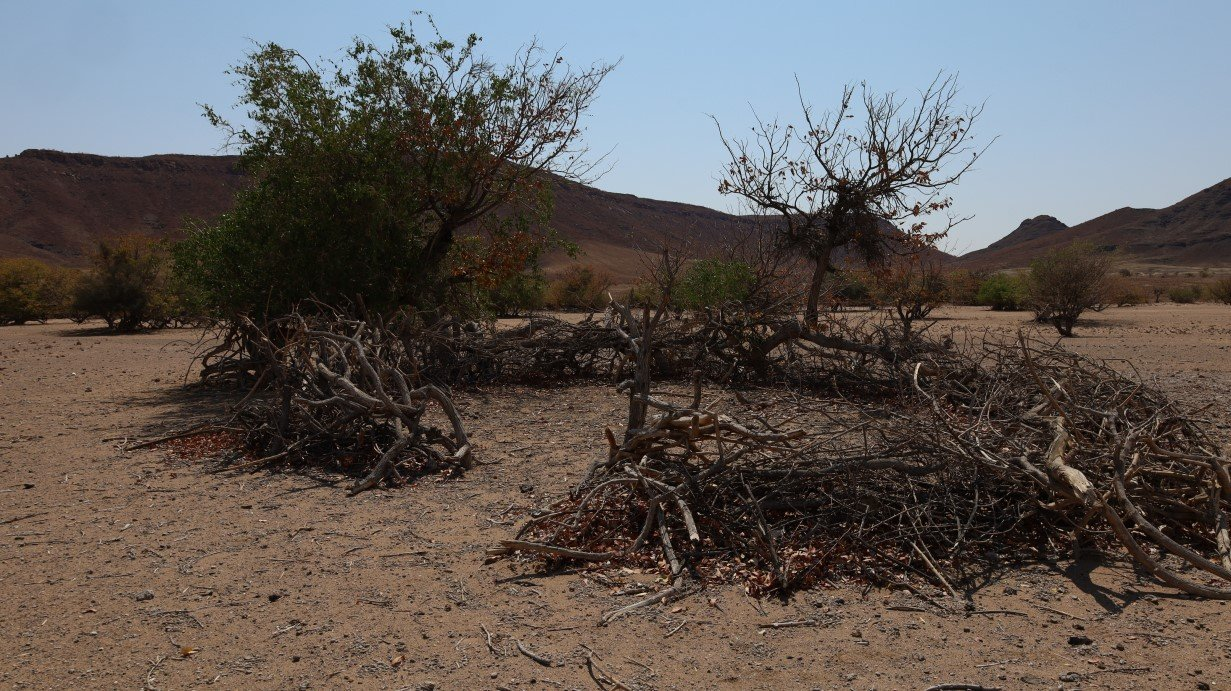
By then it was afternoon and we went looking for a place to park and sleep. Riverbeds are always a preferred choice, but the one Stefaan chose to try out turned out not to be such a good choice: the sand was deep and loose and eventually, when he decided we rather go look for a different spot, it took us a 20-turn movement to get us out of the soft riverbed and back on the track.
The next riverbed turned out way better and we parked, ate and slept.
Tomorrow we would move towards Rooidrom and take on Marienfluss: a challenging part of the road – or so we were told!
For more photos, clips and videos follow us on
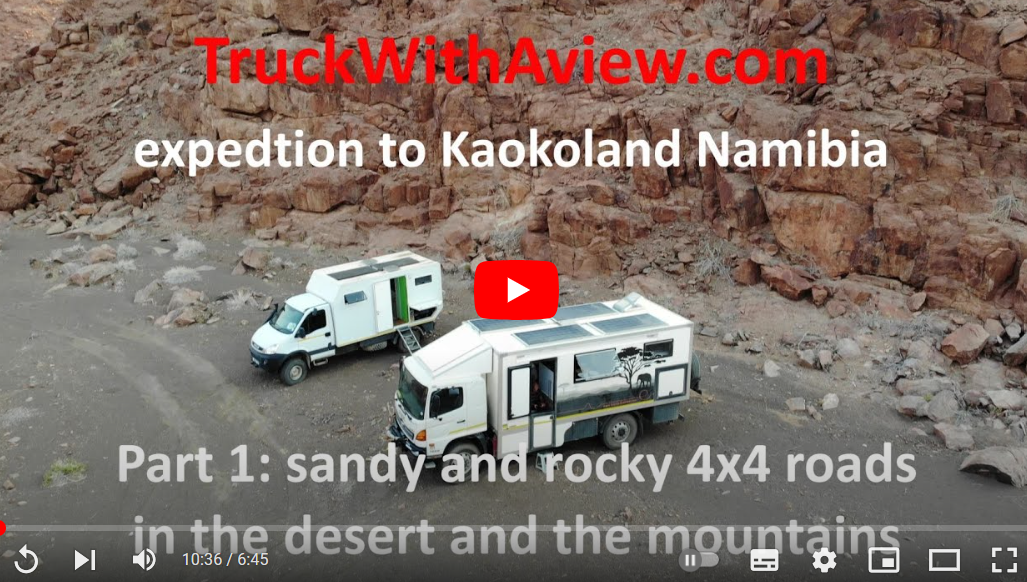
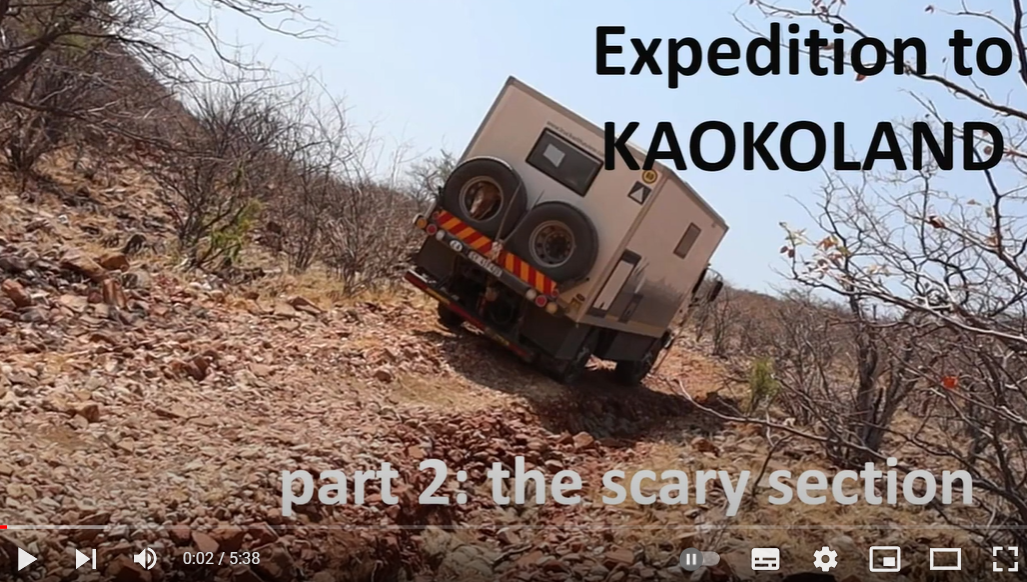
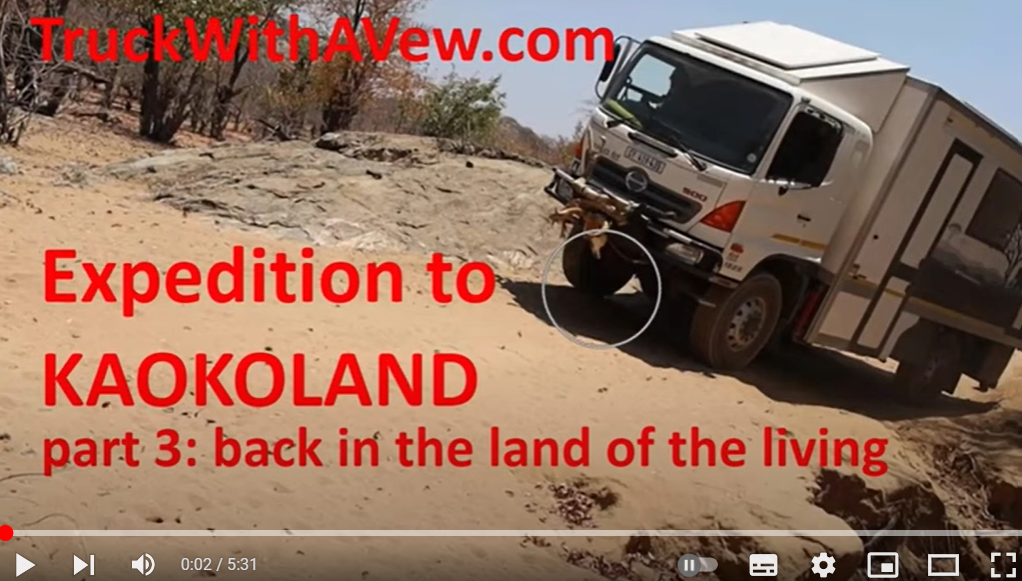


Kaokoland part 1